There is NO AI content on this website. All content on TeachWithMovies.org has been written by human beings.

- FOR TEACHERS
- FOR PARENTS
- FOR HOME SCHOOL
- TESTIMONIALS
- SOCIAL MEDIA
- DMCA COMPLIANCE
- GRATUITOUS VIOLENCE
- MOVIES IN THE CLASSROOM
- PRIVACY POLICY
- U.S. HISTORY
- WORLD HISTORY
- SUBJECT MATTER
- APPROPRIATE AGE LEVEL
- MORAL/ETHICAL EMPHASIS

SOCIAL-EMOTIONAL LEARNING
- SNIPPETS & SHORT SUBJECTS
- MOVIES BY THE CALENDAR
- DOCUMENTARIES & NON-FICTION
- TALKING AND PLAYING WITH MOVIES: AGES 3-8
- TWM’S BEST TEACHING FILMS
- TALKING AND PLAYING WITH MOVIES
- SET-UP-THE-SUB
- ARTICLES & STUDENT HANDOUTS
- MOVIE PERMISSION SLIP
- MOVIE & TELEVISION WORKSHEETS
- MATHEMATICS
- EARTH SCIENCE
- ANY FILM THAT IS A WORK OF FICTION
- FILM ADAPTATIONS OF NOVELS, SHORT STORIES, OR PLAYS
- ANY FILM THAT IS A DOCUMENTARY
- ANY FILM THAT EXPLORES ETHICAL ISSUES
- ADAPTATION OF A NOVEL
- DOCUMENTARIES
- HERO’S JOURNEY
- SCIENCE FICTION
- WORK OF FICTION
- WORK OF HISTORICAL FICTION
- PERSUASIVE DOCUMENTARY
- FICTION (SOAPS, DRAMAS, AND REALITY/SURVIVAL SHOW)
- HISTORICAL FICTION
- INFORMATIONAL DOCUMENTARY
- NEWS AND CURRENT EVENTS
- SEARCH [Custom]
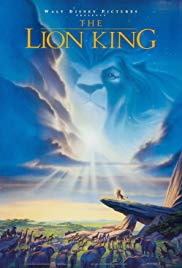
THE LION KING
SUBJECTS — The Environment; Science/Technology;
SOCIAL-EMOTIONAL LEARNING — Grieving; Redemption; Friendship; Ambition; Running Away;
MORAL-ETHICAL EMPHASIS — Trustworthiness; Responsibility.
AGE : 8 – 11; MPAA Rating: G (we disagree, there’s too much frightening violence);
Animated Musical; 1994; 1 hr. 27 minutes; Color. Available from Amazon.com .

Benefits of the Movie Possible Problems Parenting Points Selected Awards & Cast
Helpful Background Discussion Questions Social-Emotional Learning Moral-Ethical Emphasis
Assignments and Projects Bridges to Reading Links to the Internet Bibliography
MOVIE WORKSHEETS & STUDENT HANDOUTS
TWM offers the following worksheets to keep students’ minds on the movie and direct them to the lessons that can be learned from the film.
Film Study Worksheet for ELA Classes and
Worksheet for Cinematic and Theatrical Elements and Their Effects .
Teachers can modify the worksheets to fit the needs of each class. See also TWM’s Movies as Literature Homework Project .
DESCRIPTION
“The Lion King” tells the story of Simba, his birth, the murder of his father by his Uncle Scar, Simba’s exile, and his return. The film is a Disney animation with excellent music.
SELECTED AWARDS & CAST
Selected Awards:
1995 Academy Awards: Best Original Score and Best Song.
Featured Actors:
Jeremy Irons, James Earl Jones, Matthew Broderick, Whoopi Goldberg, Moira Kelly, Robert Guillaume, Cheech Marin, Rowan Atkinson, and Jonathan Taylor Thomas.
Rob Minkoff and Roger Allers.
BENEFITS OF THE MOVIE
“The Lion King” deals with the death of a parent, betrayal, guilt, running away, denial, ambition, coming of age, redemption, and friendship. See Social-Emotional Learning and Ethical Emphasis Discussion Questions. The film can serve as an introduction to Africa, food chains, the interdependence of the hunter and the hunted, lions, hyenas, meerkats, and warthogs. The movie contains an excellent example of an adult manipulating a child that can be used to help children identify, defend against, and report this type of conduct. (See An Example of Manipulative Conduct by an Adult below). Finally, this movie can introduce children to the fact that Africa has a history of rulers and conquests some of which has come down to us in oral traditions. See Sundiata in the Helpful Background section.
POSSIBLE PROBLEMS
MODERATE. This animated feature contains disturbing violence. We therefore do not recommend it for children below the age of eight. Parents or teachers of sensitive eight year olds should probably wait a year or two before they show the film. The violence includes: blood thirsty hyenas chasing Simba; a wildebeest stampede from which Simba is saved in the nick of time by Mufasa, his father; the murder of Mufasa by Scar, Mufasa’s brother (Scar throws Mufasa off a cliff into the herd of stampeding wildebeests); and a violent fight at the end of the movie between Simba and Scar.
Simba grieves touchingly for his father. This could upset sensitive children especially if there has been a recent death in the family. (This could also be a strength of the film, allowing a child who has suffered a loss that he or she has not dealt with to find an outlet for his or her grief.)
For some, the message of the film may be overpowered by the infectious musical numbers in the “hakuna matata” scenes (“you won’t get hurt if you don’t care about anything therefore to avoid being hurt, don’t care about anything”) and the alluring personalities of Timon (the meerkat character) and Pumbaa (the warthog character). After the movie is over, adults should point out that by the end of the film, not only Simba but also Timon and Pumbaa, reject “hakuna matata” in favor of involvement. When Simba returns to face Scar and the hyenas, Timon and Pumbaa help him out.
PARENTING POINTS
Watch the movie once with your kids. Over the next several weeks or whenever your children see the movie, select a theme to emphasize in a brief discussion. See the Social-Emotional Learning Discussion Questions for ideas. TWM suggests at least pointing out that by the end of the movie none of the characters lived according to “hakuna matata.” Even Timon and Pumbaa went to help Simba free the lions from Scar. In addition, ask the Quick Discussion Question in the sidebar relating to mistakes that Simba made. Lead children through a discussion of most of Simba’s errors. These discussions can be at meals, while driving in the car, or at any quiet time.
Print out this Learning Guide, show children the photographs of the real animals, and discuss some interesting facts about them. Talk a little about the concepts of the circle of life and the food chain. Give examples that the children will recognize. (See the Circle of Life.) Suggest that the children find more pictures and more information on the Internet about the animal portrayed by their favorite character. Extended quiet times are also good for sharing the story of Sundiata with children. You can read the epic myth from the sites provided in the Links to the Internet. Show your children a map of Africa and point out the modern country of Mali. That is where Sundiata lived and ruled.
Be sure to review the “It’s our little secret” scene with your kids.
Very few parents will be able to get through all of this. Pick and choose just a few of the comments or discussion questions. Take your time. Most kids will watch this movie repeatedly. You can start a new discussion each time they look at it. Select the questions that will raise issues that are important to your children.
HELPFUL BACKGROUND
An example of manipulative conduct by an adult.
The following dialogue from the film is an excellent example of how an adult can manipulate a child.
Simba: My dad just showed me the whole kingdom. And I’m going to rule it all…. Scar: So, your father showed you the whole kingdom, did he? Simba: Everything. Scar: He didn’t show you what’s beyond that rise at the northern border. Simba: No. He said I can’t go there. Scar: And he’s absolutely right. It’s far too dangerous. Only the bravest lions go there. Simba: Well, I’m brave. What’s out there? Scar: I’m sorry Simba, I just can’t tell you. Simba: Why not? Scar: Simba, Simba, I’m just looking out for the well being of my favorite nephew. Simba: Yeah, right. I’m your only nephew. Scar: All the more reason for me to be protective. An elephant graveyard is no place for a young prince. Simba: An elephant what? Wow! Scar: Oh dear, I’ve said too much. Well, I suppose you would have found out sooner or later, you being so clever and all. Just do me one thing, promise me you’ll never visit that dreadful place. Simba: No problem. Scar: There’s a good lad. You run along now and have fun. And remember, it’s our little secret.
Read and discuss this dialogue with children. The final line “And remember, it’s our little secret” protects child abusers and people manipulating children by keeping other adults from knowing about their actions and makes the child feel important by sharing a secret with the adult. Caution children that when a person asks that they keep a secret from either or both of their parents, unless it’s for a surprise party or a present or something similar, an alarm bell should sound in their head and the child should immediately tell an adult: a parent, a relative, or a teacher. If one parent asks a child to keep a secret from the other parent, the same rule should apply.
Step by step analysis of the conversation: Line 6: Scar piques Simba’s interest. Adventuresome children will want to think of themselves as brave. In line 8, Scar plays on this by saying that he “just can’t” tell Simba. But Scar implies that he regrets this, which gives Simba hope that he can change Scar’s mind. Line 12: After tantalizing Simba, Scar lets slip information about what’s on the northern border. Line 14: By telling Simba he is clever, Scar encourages Simba to think that he can make the decision to go to the elephant graveyard despite his father’s injunction. In fact, Simba is a child, who doesn’t have the judgment or experience to make a good decision about going to a dangerous place. The promise sought by Scar, that Simba will not visit the elephant graveyard, is not real. Both Scar and Simba understand this. The request for secrecy in line 16 is a tipoff that Scar is probably doing something which he knows to be wrong and that Simba should immediately tell his father or mother about the conversation.
Children should be alerted to the fact that in the movie, Scar’s tone is exaggerated to signal to the viewer that Scar is doing something that he knows he shouldn’t. In real life, an adult manipulating a child will make the situation appear normal and appropriate or that it is the child’s fault. Children must learn to step back and look at what they are being asked to do to see if they should in fact do it. In this case, Scar’s request for secrecy should have been a tipoff to Simba that he needed to be very careful about this decision and that he should tell his parents about the conversation.
“The Circle of Life” and “Food Chains”
These are related concepts. “The Circle of Life” refers to the fact that plants and animals are born, mature, procreate, and then die, unless they are killed early in the cycle. Plants take nutrients from the earth, many of which come from decayed plants or the bodies of dead animals. Animals eat either plants or other animals. While animals live, they help nourish plants with their droppings. When animals die, they nourish other animals or plants. Each component of this process is related to the other components, either directly or indirectly, and if one is modified or interrupted, many of the other components will be affected as well. “The Circle of Life” is not a scientific term.
The “food chain” is a scientific term that refers to the fact that each living creature survives by feeding on other animals or on plants. Those plants or animals that are eaten are said to be lower on the food chain than the creature who eats them. Thus, a lion is said to be higher on the food chain than the wildebeest that the lion kills for its supper. The wildebeest is higher on the food chain than the various plants that it eats. An animal that catches another animal and eats it is called a “predator.” A species is at the top of its food chain if it has no predators who eat it regularly. Lions and humans are said to be at the top of their respective food chains. (See discussion question #5 which raises the issue of which species is really at the “top” of the food chain when bacteria and viruses feed on and sometimes kill lions and human beings.)
An Introduction to Some of the Real Animals:

Lion: See Learning Guide to “ Born Free “. Additional interesting facts about lions: They can jump nine feet. Lions are not the largest of the big cats. A tiger can grow to be larger than a lion. Male lions sometimes play with their cubs. Lions can spend as long as 20 hours each day sleeping and resting. Adult male lions are 50% larger than female lions. Usually, only the female lions hunt game. They hunt cooperatively. One lion will charge the prey and drive it toward other lions waiting to attack it. When the prey is killed, female lions allow male lions to eat first. Lions usually hunt at night and rest during the day. All of the females in a pride are related to each other. The male is related only to his cubs. When a new male takes over a pride, he will often kill all of the existing cubs.
The Meerkat (“Timon”): Meerkats are small members of the mongoose family, about 8 inches tall, weighing about two pounds. Their home range is the Kalahari Desert in Southern Africa. They have dark eye markings that reduce glare and serve as built-in sunglasses. They have good vision and see in color. (Many animals, dogs, for instance, don’t see in color.) To gather warmth, meerkats often stand facing the sun with their tails serving as a third leg.

Meerkats live in a “mob” or “gang” of between 5 and 30 individuals. Meerkats are one of the most cooperative species on the planet. Mature offspring often stay in the group into which they are born instead of dispersing to breed. Each year many meerkats, about half in most cases, are lost to predators (usually martial eagles and jackals). Members of a “mob” take turns performing risky sentinel duty. Only the alpha male and alpha female will breed but all meerkats, male and female, participate in child rearing. A “gang” will share a common place to deposit their droppings.
Meerkats eat insects such as scorpions, beetles, spiders, centipedes, millipedes, worms, and crickets. They will also eat small mammals, small reptiles, birds, eggs, tubers, and roots.
To capture the feeling of meerkats, the Disney animators studied the animals living at “The Living Desert Zoo and Gardens” located in Palm Desert, California. (Just a few miles from Palm Springs.) This is an excellent zoo and museum featuring desert plants and animals. See their website .
Laughing Hyena: The laughing hyena, or spotted hyena, is known for its distinctive call. Laughing hyenas can weigh up to 175 pounds and grow to be five and a half feet long (not including a foot long tail). They are found from Africa through Southern Asia all the way to eastern India. Traditionally, hyenas were thought of as scavengers who lived off the kills of other animals. Recently it has been discovered that hyenas will hunt and kill small mammals and reptiles as well as the newborn or young of larger mammals. When hyenas are in large packs, they have been known to attack larger animals. Hyenas will also eat eggs, insects, fruits, and berries. Hyenas and lions compete with each other, stealing each other’s kills. Sometimes a large pack of hyenas will drive a pride of lionesses from their kill. Female hyenas dominate the males, the opposite of the situation with lions. Hyenas have a highly developed sense of smell, and their eyesight is poor.
Specialized teeth, strong jaws, and an all-purpose digestive system allow hyenas to eat more bone than other predators. Thus hyenas provide a benefit to the ecosystems they inhabit by eating the remnants left by large predators, such as lions. In some parts of Africa, hyenas are allowed to wander through the villages eating the garbage. In a few African cultures, dead human beings are placed out in the open to be eaten by hyenas and thus returned to the earth in that manner.
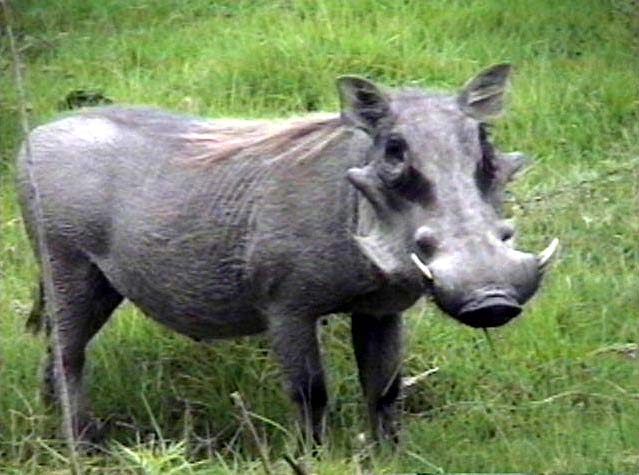
Warthog (“Pumbaa”): Warthogs are large-headed members of the pig family. They have blackish or brown skin and stand about 30 inches at the shoulder. Warthogs can grow to four feet long and attain up to 330 pounds in weight. They feed on grasses, roots, berries, bark, and occasionally carrion. They have sparse hair and a coarse mane extending from the neck to the middle of the back. The tail is long, thin, tufted at the end, and held high when the warthog runs. Warthogs have poor eyesight and rely upon their sense of smell.
The most distinctive thing about the warthog is its large head. Both male and female have two sets of tusks. The tusks from the lower jaw are sharp weapons. The tusks that grow out of the upper jaw curve up and if they get long enough will form a semicircle. Males have prominent warts on their faces. The tusks protect a warthog’s face during fights. The warts on the faces of female warthogs are smaller than on the males. Warthogs also have thick pads of skin on their knees to allow them to slide along the surface of the ground as they feed. Using their snout and tusks, warthogs churn up the soil looking for food. This is beneficial to the land because it allows the soil to be aerated.
Warthogs shelter in burrows which they enter backward so as to be able to defend themselves. In the morning, some will burst out of their burrows at top speed in order to get a head start on any predators who may be waiting for them to emerge. Male warthogs are usually solitary, joining the female groups only for mating. A group of warthogs consists of one or two sows and their young.
Like Pumbaa, warthogs would rather flee than fight. They will grunt or snort, flatten their ears, and then bolt for underground cover. But if cornered and forced to fight, warthogs can be fierce.
Warthogs have a symbiotic relationship with certain birds, such as the yellow hornbill. Warthogs allow the birds to eat parasites that live on their bodies.
Sundiata Keita
Sundiata Keita (also called Sunjata Keyita) was born at about 1190 C.E. and died in about 1255 C.E. He was the founder of the Mali Empire and is celebrated as a hero of the Mandinka people of West Africa. His tale is told in Epic of Sundiata, various forms of which have survived in the oral tradition kept alive by generations of traditional Mandinka “griots.” Although nominally Muslim, Sundiata respected the traditional religions of his people. He kept the peace and allowed trade to flourish. One of his names was the “Lion King.”
The story of the film, “The Lion King,” is very loosely based on the story of Sundiata. They share the name and the circumstance of having been exiled only to return in triumph. See Links to the Internet for several websites discussing the epic of Sundiata.
DISCUSSION QUESTIONS
1. See Discussion Questions for Use With any Film that is a Work of Fiction .
No Suggested Answers.
2. What is the “circle of life?” Explain how it works.
Suggested Response:
See the Helpful Background Section.
3. What is a “food chain?”
4. What does it mean to be at the top of the food chain? Name three animals at the top of their “food chains.”
5. Can it be said that bacteria and viruses which prey upon and sometimes kill humans and lions are really at the top of the food chain?
No. The concept of the food chain relates to complex organisms such as mammals, reptiles, and amphibians, and to activities such as hunting and feeding. It hasn’t been applied to diseases caused by bacteria and viruses. The relationship of disease to the food chain is an interesting thought showing the limitations of the food chain analysis.
6. In the film, one of the hyenas refers to lions as being at the top of the food chain and implies that hyenas are not. Is this correct?
Only partially. Both lions and hyenas are at the at the top of their food chains. Hyenas have no natural predators and compete with lions for food. Lions will kill hyenas as competitors but they generally don’t eat hyenas. Lions, like hyenas, will eat the kills of other animals. The film assumes that hyenas do not hunt and kill their food but are only scavengers. This is incorrect.
7. How did Scar convince Simba to go outside his father’s territory where Simba could be killed by the hyenas?
Scar aroused Simba’s curiosity by telling him it was an elephant graveyard. Then Scar challenged Simba by saying that only the bravest lions went there. Finally, Scar asked Simba not to tell anyone and to keep it “our little secret” See the analysis of this dialogue in the Example of Manipulative Conduct by an Adult.
8. What were the results of Simba’s disobedience when he went to the elephant graveyard against the instructions of his father?
Simba was disobedient and almost got himself and Nala killed by trying to find the elephant graveyard.
9. Was Scar really smarter than Mufasa?
No. Mufasa could manage the pride lands so that they continued year after year. Scar mismanaged the pride lands and ruined them. Scar was able to kill Mufasa by betraying him. Disloyalty is not evidence of intelligence.
10. What did Mufasa warn Simba against when he said, “I’m only brave when I have to be”?
Don’t go looking for trouble or taking reckless risks.
1. Simba felt responsible for his father’s death because his father was trying to save Simba when his father died. Should Simba have felt that way?
No, Simba didn’t do anything wrong this time. The situation was caused by Scar, who lied to Simba about a surprise for his father and put Simba in the way of the stampede. Scar also had the hyenas start the stampede and then murdered Mufasa by pushing him off the cliff.
RUNNING AWAY
2. Did Simba do the right thing by running away?
There are two parts to this answer. First, the initial decision to do what Scar suggested, and run away from home, was not good. Especially if Simba had done something wrong, he should have stayed and taken responsibility. However, once the hyenas started to chase Simba, he had no choice because the hyenas would have killed him. In general, running away from home is not a good idea because it removes children from the protection of their parents and exposes them to great danger. For example, Simba would have been eaten by the vultures had not Timon and Pumbaa happened to be “bowling for buzzards.”
REDEMPTION AND COMING OF AGE
3. While Simba was in the forest with Timon and Pumbaa, he thought that he couldn’t go back to his home because he had been responsible for his father’s death. Was he right about his?
No. Simba needed to go back and take responsibility for what he thought he had done. When Nala found Simba, her revelations about Scar’s mismanagement of the pride lands also became a compelling reason for Simba to return. Simba responded to this later challenge only to find that he was not responsible for his father’s death.
4. In the story, Simba was blameless in Mufasa’s death, but he didn’t know it. What if Mufasa had been killed in the elephant graveyard while trying to rescue Simba and Nala from the hyenas? This would have been partially Simba’s fault because Simba had disobeyed Mufasa by going there. Was there any way that Simba could have redeemed himself if his disobedience had been a major cause of his father’s death?
In normal human experience, there is almost always a way for a person to atone for what he or she has done and to achieve at least some level of redemption. Simba could have redeemed himself by getting rid of Scar, the bad king. In addition, for his self-esteem and to permit him to move on, Simba should have atoned for what he thought he had done, rather than run away. Atonement is frequently missing from modern responses to negligent conduct. Atonement is an important way to restore internal moral equilibrium by putting effort into righting a wrong one has committed or providing compensation to an injured person.
5. Did Simba do the right thing in waiting for such a long time before he went back home?
No, but the important thing is that he did go back when Nala found him.
6. What was the most courageous thing that Simba did in the story?
Going back to challenge Scar when Simba still thought that he was responsible for his father’s death. Just going back was more courageous than fighting Scar; it took moral courage.
7. Does this film marginalize the role of women?
Yes. Simba’s mother had a very small role and the female lions did not challenge scar when Simba was gone.
8. How do Timon and Pumbaa show their friendship to Simba?
By going back to lion country to help him fight Scar and the hyenas. They had to give up their philosophy of “hakuna matata.” Point out that Simba didn’t even ask for their help, probably thinking that, as adherents to “hakuna matata,” Timon and Pumbaa wouldn’t be interested. They came without being asked. That’s what a friend does.
9. When is ambition a source of evil?
Ambition is bad when it leads people to do something wrong or prevents them from doing the right thing. Ethics and morality should channel ambition into paths which cause people to do good things that benefit society as a whole.
MORAL-ETHICAL EMPHASIS (CHARACTER COUNTS)
Discussion Questions Relating to Ethical Issues will facilitate the use of this film to teach ethical principles and critical viewing. Additional questions are set out below.
TRUSTWORTHINESS
(Be honest; Don’t deceive, cheat or steal; Be reliable — do what you say you’ll do; Have the courage to do the right thing; Build a good reputation; Be loyal — stand by your family, friends and country)
1. When Simba snuck off to the elephant graveyard, he lied to his mother about where he was taking Nala. What did this lie almost cost Simba and Nala? By lying, what did Simba not have that a young lion could have used?
The lie almost cost Simba and Nala their lives. Being young lions, Simba and Nala didn’t have enough experience or knowledge to properly assess the danger of a trip to the elephant graveyard. Decisions based on lies are almost never valid. By lying to his mother, Simba did not have the benefit of her superior knowledge and judgment about the dangers of what he intended to do. Nala went along with the lie and therefore became a party to it.
RESPONSIBILITY
(Do what you are supposed to do; Persevere: keep on trying!; Always do your best; Use self-control; Be self-disciplined; Think before you act — consider the consequences; Be accountable for your choices)
2. What do you think of “hakuna matata” as a philosophy of life? By the end of the film did anyone live by that credo?
It’s irresponsible because a person living by “hakuna matata” would never accomplish anything, would not meet his or her responsibilities, would not face up to the challenges in life, would not mature or grow up, and would not be part of a caring community. By the end of the film, no one, not even Timon and Pumbaa, lived by “hakuna matata.”
3. Evaluate Nala’s role in the trip to the elephant graveyard.
Nala had a responsibility to her friend Simba not to let him lie and not to let him go to a place that was outside of the area in which she knew she was protected. This was especially true when she didn’t know enough about that place to know if it was dangerous. She also had a responsibility to her mother and to Simba’s mother to try to force Simba to correct his lie to them. By not speaking up, she participated in Simba’s lie.
ASSIGNMENTS, PROJECTS & ACTIVITIES
See Assignments, Projects, and Activities for Use With Any Film that is a Work of Fiction .
BRIDGES TO READING
There are a plethora of children’s books on lions with interesting text and beautiful pictures. Examples that we have seen are: Lions, a Carolrhoda Nature Watch Book by Kathy Darling, 2000; Lion: Habitats, Life Cycles, Food Chains, Threats Natural World series, by Bill Jordan, 2000; Eye to Eye With Big Cats: Lions by Jason Cooper; Lions from the NatureBooks series by Sandra Lee; Lions from the Animals Series; by Susan Schafer, 2001.
LINKS TO THE INTERNET
- Mr. Dowling’s Sundiata Page contains a simplified retelling of the story suitable for elementary school; and
- Background to the Epic of Sundiata Keita prepared by Jim Jones, Univesity of West Chester.
- Excerpt from Animals of Africa on Hyenas
- African Wildlife Foundation Article on Warthogs ;
- Warthog at Spooks Photography Page ; and
- Warthog article on the Enchanted Learning Site .
- National Geographic Webpage on Meerkats ;
- Meerkat Information ; and
- Meerkat Info from Meerkats.com.
- Excerpt from Animals of Africa on Hyenas .
BIBLIOGRAPHY
In addition to websites which may be linked in the Guide and selected film reviews listed on the Movie Review Query Engine , the following resources were consulted in the preparation of this Learning Guide:
- “Carnivore.” Encyclopædia Britannica. 2003. Encyclopædia Britannica Premium Service. 27 Jun 2003.
- “Hyena.” Encyclopædia Britannica. 2003. Encyclopædia Britannica Premium Service. 27 Jun 2003.
- “Warthog.” Encyclopædia Britannica. 2003. Encyclopædia Britannica Premium Service. 27 Jun 2003.
This Learning Guide was last updated on December 10, 2009.
- Skip to primary navigation
- Skip to main content
- Skip to primary sidebar
- Skip to footer
KidsKonnect
Reading Comprehension Cause and Effect Context Clues Compare and Contrast
Noun Worksheets Writing Prompts Compound Words Figurative Language
The Wizard of Oz Hans Christian Andersen Types of Writing Text Structure
Literary Devices
Alliteration Hyperbole Metaphor Irony
Subject Verb Agreement Poetry Climax Rhyme
View all reading worksheets
Action Verbs Tragedy Transition Words Phonics
View all writing worksheets
Dramatic Irony Cacophony Anaphora Setting
View all literature worksheets
Abbreviations Transition Words Conclusion Situational Irony
View all literary device worksheets
Women’s History
Inspirational Women Women's History Month First Lady of the US Women's Equality Day International Women's Day
View all Women's History worksheets
American Revolution
American Revolution Patriots & Loyalists Patrick Henry Sons of Liberty
View all American Revolution worksheets
US Constitution US Independence Trail of Tears The Pilgrims
View all US History worksheets
Ancient History
Ancient China Ancient Mayan Ancient Rome Ancient Aztec
View all Ancient History worksheets
World History
Roaring Twenties Industrial Revolution Middle Ages The Renaissance
View all World History worksheets
Famous Wars
World War 1 World War 2 Vietnam War American Civil War
View all Famous War worksheets
Anne Frank Sally Ride Neil Armstrong Christopher Columbus
View all famous figure worksheets
Joe Biden Donald Trump Abraham Lincoln George Washington
View all President worksheets
Roald Dahl Dr Seuss JK Rowling Michael Morpurgo
View all author worksheets
Civil Rights
Rosa Parks Sojourner Truth Medger Evers Martin Luther King
Elvis Presley Johann Sebastian Bach Ella Fitzgerald Wolfgang Mozart
View all musician worksheets
Thomas Edison Albert Einstein Henry Ford Wright Brothers
View all inventor worksheets
Muhammad Ali Michael Jordan Jackie Robinson Jesse Owens
View all athlete worksheets
Nat Turner Ruby Bridges Harriet Tubman Booker T Washington Malcolm X
View all civil rights worksheets
Natural Wonders
River Nile Mount Everest Sahara Desert Mount Etna Ancient Pyramids Amazon River
Landmarks/Sights
Mount Rushmore Statue Of Liberty White House Stonehenge Great Wall of China Santa Fe Trail
New York Texas South Carolina Alaska Nevada Ohio
Australia United Kingdom China Canada Argentina Brazil
Mount Fuji Mississippi River Rocky Mountains Volcano Glacier The Great Barrier Reef
View all natural wonders worksheets
Hoover Dam Bermuda Triangle Leaning Tower Of Pisa Arc De Triomphe Golden Gate Bridge Colosseum
View all landmark worksheets
California Colorado Indiana Florida Washington Georgia
View all US state worksheets
Poland Greece Philippines Japan France India
View all country worksheets
May Day Cinco de Mayo Teachers’ Appreciation Day Mother’s Day Memorial Day Mexican-American War Lewis and Clark The Tea Act of 1773 Haymarket Square Riot Beltane
View all Seasonal worksheets
Social Emotional Learning
Morals and Values Self Management Ethics Depression Relationship Skills Self-Awareneess Self-Esteem Emotions and Feelings Goal-Setting Interpersonal Skills
View all Social-Emotional Learning worksheets
Celebrations
Easter Saint Patrick’s Day Valentines Day Chinese New Year Rosh Hashanah Thanksgiving Flag Day Cinco de Mayo Beginning Of Lent Yom Kippur View all Celebrations worksheets
Remembrance
Pearl Harbor Day Veterans’ Day Memorial Day Battle Of The Somme D-Day 9/11 Anzac Day Martin Luther King Jr. Day International Women’s Day Victoria Day View all Remembrance worksheets
Camels Fox Bears Penguin Wolf Beavers Mountain Lion Red Panda Snow Leopard White Tigers Silverback Gorilla Okapi
View all mammal worksheets
Marine Life
Crabs Starfish Fish Octopus Great White Shark Dolphin Walrus Narwhal Megalodon Shark Killer Whale Beluga Whale Lionfish
View all marine life worksheets
Insects/Invertebrates/Reptiles
Millipede Praying Mantis Ladybug Ants Spider Iguana Chameleon Komodo Dragon Lizard Bearded Dragon Gila Monster Snakes
View all insect worksheets
Eagle Peregrine Falcon Snowy Owl Emu Woodpecker Albatross Swan Quail Bald Eagle Hummingbird Peacock
View all Bird worksheets
Natural World
Avalanche Flood Tsunami Natural Disasters Fossils Ice Age
View all natural world worksheets
Earth Sciences
Water Cycle Global Warming Deciduous Forests Hurricane Sandy Hurricane Katrina Global Warming
View all earth science worksheets
Food Chain Fossils Photosynthesis Cells Ecosystem Plants
View all biology worksheets
Solar System Black Holes Eclipse Stars and Constellations The Moon Comets
View all space worksheets
Chemistry/Physics
Magnetism Graduated Cylinders Solid, Liquid, Gas Gravity Light Sound
View all science worksheets
Kangaroo Horse Bear Lion Lizard Octopus
View all animal worksheets
Addition Sentences Single Digital Addition Two-Digit Addition Three Digit Addition Repeated Addition
View all Addition Worksheets
Ordinal Numbers Cardinal Numbers Rounding Numbers Odd & Even Numbers Comparing Numbers
View all Numbers Worksheets
Counting Money Subtracting Money Change Money Coin Name & Value Calculate Change (Money)
View all Money Worksheets
Number Line Single Digit Subtraction Place Value Subtraction Sentences Input & Output Tables
View all Math Worksheets
The Lion King Facts & Worksheets
“the lion king” is an animated musical adventure film released in 1994, produced by walt disney feature animation and released by walt disney pictures., search for worksheets, download the the lion king facts & worksheets.
Click the button below to get instant access to these worksheets for use in the classroom or at a home.
Download This Worksheet
This download is exclusively for KidsKonnect Premium members! To download this worksheet, click the button below to signup (it only takes a minute) and you'll be brought right back to this page to start the download! Sign Me Up
Edit This Worksheet
Editing resources is available exclusively for KidsKonnect Premium members. To edit this worksheet, click the button below to signup (it only takes a minute) and you'll be brought right back to this page to start editing! Sign Up
This worksheet can be edited by Premium members using the free Google Slides online software. Click the Edit button above to get started.
Download This Sample
This sample is exclusively for KidsKonnect members! To download this worksheet, click the button below to signup for free (it only takes a minute) and you'll be brought right back to this page to start the download! Sign Me Up
Table of Contents
“The Lion King” is an animated musical adventure film released in 1994, produced by Walt Disney Feature Animation and released by Walt Disney Pictures. Directed by Roger Allers and Rob Minkoff, the movie features the journey of Simba, a lion cub destined to succeed his father, Mufasa, as the King of the Pride Lands. The film is considered a timeless classic and has undergone multiple adaptations for cinema, theater, and television. In addition to being a widely acclaimed visual film, it also has an award-winning soundtrack.
See the fact file below for more information about the Film Study, The Lion King, or you can download our 25-page The Lion King worksheet pack to utilize within the classroom or home environment.
Key Facts & Information
Film release.
- “The Lion King” is a Disney animated classic released on June 15, 1994.
- It premiered on June 12, 1994, at the El Capitan Theatre in Hollywood , California .
- Produced by Walt Disney Feature Animation and released by Walt Disney Pictures, “The Lion King” was directed by American storyboard artist and animator Roger Allers and American animator Rob Minkoff, who made his directorial debut in this film.
- The screenplay was written by Irene Mecchi, Jonathan Roberts, and Linda Woolverton.
- Hans Zimmer composed the music for “The Lion King,” with songs by Elton John and Tim Rice.
PLOT SUMMARY
- “The Lion King” follows the life of Simba, a lion cub born to Mufasa, the king of the Pride Lands.
- Simba’s joyous childhood takes a tragic turn when his uncle Scar orchestrates Mufasa’s death.
- Simba is forced into exile, as planned by Scar so he can take over his royal authority.
- Scar ascends to power, ruling with heartlessness and causing the Pride Lands to wither.
- While in exile, Simba lives a carefree life with the meerkat Timon and warthog Pumbaa and grows up over the years.
- Nala, Simba’s childhood friend, discovers him and implores him to return.
- Nala challenges Simba to embrace his destiny and restore balance in the Pride Lands.
- Simba confronts his past, guided by Rafiki, the wise baboon.
- The epic climax sees Simba challenging Scar, unveiling the truth about Mufasa’s demise.
- The Pride Lands erupt in a tumultuous battle, culminating in Simba’s triumph over Scar.
- As Simba ascends the throne, he restores prosperity and vitality to the Pride Lands, which solidifies the Circle of Life.
KEY CHARACTERS AND CAST
- Simba is the central character who goes from being a carefree cub to a mature and fearless leader.
- Initially hesitant and guilt-ridden, he later embraces his destiny as King of the Pride Lands.
- Simba’s journey centers on resilience, growth, and a sense of responsibility.
- Matthew Broderick voiced Adult Simba and Jonathan Taylor voiced Thomas Young Simba.
- Mufasa is Simba’s father, the wise and noble King of the Pride Lands.
- He is a symbol of guidance and leadership, especially in Simba’s life.
- Mufasa’s love for his family and dedication to the Circle of Life define him as a symbol of leadership and integrity.
- Mufasa is voiced by James Earl Jones.
- Scar is the main antagonist of the film.
- Voiced by Jeremy Irons, Scar is the villainous and cunning uncle of Simba, introduced as a character thirsty for power.
- Because he is driven by envy, Scar becomes responsible for the most deceitful and ruthless twist in the story.
- Nala is Simba’s childhood friend and later becomes his queen.
- Nala’s relentlessness encourages Simba to reclaim his rightful place as the King of the Pride Lands.
- Because of this, Nala is known as the catalyst for Simba’s growth.
- Moira Kelly voiced Adult Nala, and Niketa Calame voiced Young Nala.
- Timon, a meerkat, who, alongside his buddy Pumbaa, acts as comic relief.
- A quick-witted and carefree character, Timon is voiced by Nathan Lane.
- Always with Timon is Pumbaa, a warthog who is an endearing, loyal, and optimistic companion.
- Pumbaa is voiced by Ernie Sabella.
- Rafiki is the wise baboon shaman who serves as the spiritual guide in the story, mainly to Simba.
- Voiced by Robert Guillaume, Rafiki symbolizes wisdom.
- Zazu is the hornbill advisor whose loyalty hinges on the well-being of the Pride Lands.
- Rowan Atkinson voiced the funny and charming Zazu.
- One of the primary themes in “The Lion King” is the Circle of Life, which represents the interconnectedness of all living things.
- The film explores the cyclical nature of birth, death, and renewal.
- These all contribute to the balance that sustains the ecosystem .
- Another central theme is the importance of leadership and responsibility.
- This theme is exemplified in Simba’s evolution from a happy-go-lucky cub to a responsible king.
- Simba’s life also focuses on the theme of identity and self-discovery.
- Upon losing his father, Simba faces the burden of guilt while in exile. He later learns to be secure in his identity and embrace his destiny.
- Friendship is also an overarching theme in the film, especially exemplified by Timon and Pumbaa, who supported Simba when he was struggling.
- Last but not least, the dichotomy between good and evil is evident in characters like Simba and Scar.
- Scar’s greed and betrayal emphasize the concept of “good vs. evil.”
THE MAKING OF THE FILM
- A talented team of animators led by Mark Henn and Andreas Deja used hand-drawn animation techniques in bringing “The Lion King” to life.
- One of their goals was to depict animal movements and behaviors accurately.
- They were able to do this through extensive research.
- They visited wildlife reserves and studied the behavior of actual lions before going to the drawing board and animating them.
- The use of traditional animation and computer-generated imagery (CGI) were combined when making the film.
- CGI was used in some scenes, like the wildebeest stampede incident.
- African influences were also incorporated into the musical score.
CULTURAL IMPACT AND RECEPTION
- “The Lion King” received widespread acclaim from audiences and critics upon its release in 1994.
- It became a cultural phenomenon, grossing over $968 million globally.
- The film won two Academy Awards for Best Original Score (Hans Zimmer) and Best Original Song for “Can You Feel the Love Tonight.”
- It also earned Golden Globes and Grammy Awards, among many other accolades.
- Movie critics have praised the film’s animation, storytelling, and emotional depth.
- “The Lion King” not only dominated the box office but also left an enduring impact on popular culture, spin-offs, merchandise, and a Broadway adaptation that premiered in 1997.
The Lion King Worksheets
This fantastic bundle includes everything you need to know about the Film Study, The Lion King across 25 in-depth pages. These ready-to-use worksheets are perfect for teaching kids about The Lion King. The film is considered a timeless classic and has undergone multiple adaptations for cinema, theater, and television. In addition to being a widely acclaimed visual film, it also has an award-winning soundtrack.
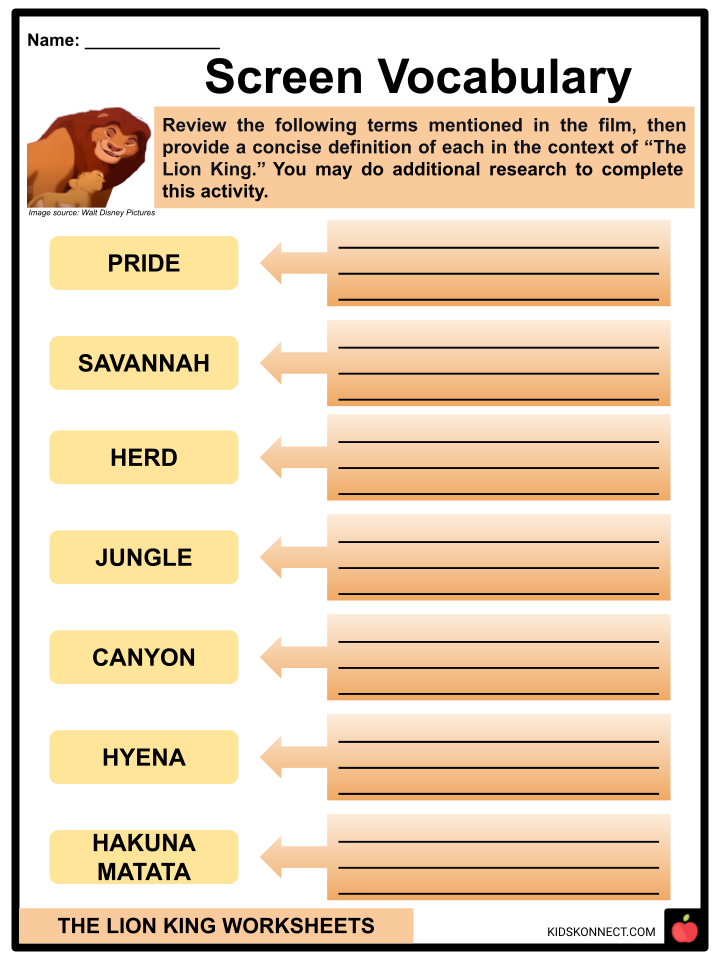
Complete List of Included Worksheets
Below is a list of all the worksheets included in this document.
- The Lion King Facts
- Screen Vocabulary
- Plot Diagram
- Pride Lands Characters
- Major Scenes
- My Honest Review
- Three Key Settings
- Seen in the Scene
- Moral Dilemma
- Character Development
- Choose Your Prompt
Frequently Asked Questions
When was “the lion king” released.
“The Lion King” was originally released on June 15, 1994.
Who are the main characters in “The Lion King”?
The main characters include Simba, Mufasa, Scar, Nala, Timon, and Pumbaa. Simba is the protagonist, Mufasa is his father, Scar is the main antagonist, Nala is Simba’s friend and later his queen, while Timon and Pumbaa are a meerkat and warthog duo who befriend Simba.
What is the central theme of “The Lion King”?
The central theme of “The Lion King” revolves around the circle of life, responsibility, and the journey of self-discovery. It explores the challenges Simba faces as he matures and learns to embrace his destiny.
Who provided the voice for Simba in the original 1994 film?
In the original 1994 film, the young Simba was voiced by Jonathan Taylor Thomas, while the adult Simba was voiced by Matthew Broderick.
What iconic song from “The Lion King” won the Academy Award for Best Original Song?
“Can You Feel the Love Tonight,” performed by Elton John and written by Elton John and Tim Rice, won the Academy Award for Best Original Song in 1995. It is one of the most iconic songs from the film.
Link/cite this page
If you reference any of the content on this page on your own website, please use the code below to cite this page as the original source.
Link will appear as The Lion King Facts & Worksheets: https://kidskonnect.com - KidsKonnect, February 21, 2024
Use With Any Curriculum
These worksheets have been specifically designed for use with any international curriculum. You can use these worksheets as-is, or edit them using Google Slides to make them more specific to your own student ability levels and curriculum standards.
Related Resources
KidsKonnect is a growing library of high-quality, printable worksheets for teachers and homeschoolers.
Home Facts Privacy About Blog Contact Terms
Safe & Secure
We pride ourselves on being a safe website for both teachers and students. KidsKonnect uses a secure SSL connection to encrypt your data and we only work with trusted payment processors Stripe and PayPal.
Hero's Journey
Ever notice that every blockbuster movie has the same fundamental pieces? A hero, a journey, some conflicts to muck it all up, a reward, and the hero returning home and everybody applauding his or her swag? Yeah, scholar Joseph Campbell noticed first—in 1949. He wrote The Hero with a Thousand Faces , in which he outlined the 17 stages of a mythological hero's journey.
About half a century later, Christopher Vogler condensed those stages down to 12 in an attempt to show Hollywood how every story ever written should—and, uh, does —follow Campbell's pattern. We're working with those 12 stages, so take a look. (P.S. Want more? We have an entire Online Course devoted to the hero's journey.)
Ordinary World
Simba is a little cub who gets to live in his ordinary world doing ordinary-world things. You know, just stuff like being a prince and using the entire African savanna as his playground. Super ordinary.
Call to Adventure
Scar banishes Simba from the Pride Lands.
Refusal of the Call
Instead of challenging Scar, Simba runs away with his tail between his legs. He lives for many peaceful and wondrous years in a jungle sanctuary with his friends, Timon and Pumbaa.
Meeting the Mentor
Simba has a fateful conversation with the ghost of his father, who tells him fatherly things like "be responsible" and "seek revenge on your evil uncle."
Crossing the Threshold
Simba returns to the Pride Lands.
Tests, Allies, Enemies
Simba does battle with Scar's henchmen. Scar tries to deceive the other lions into thinking that Simba is a patricidal maniac, but Simba corrects that misconception quickly.
Approach to the Inmost Cave
Simba and Scar circle each other, preparing for their final showdown. Simba tries to banish Scar from the Pride Lands, but Scar kicks some flaming embers into Simba's eyes, starting a fight.
Simba fights Scar and wins, throwing his uncle into a pack of hungry hyenas.

Reward (Seizing the Sword)
Simba climbs Pride Rock, his role as king restored.
The Road Back
The Pride Lands return to their normal lush and green state.
Resurrection
Simba is accepted as the rightful king of the Pride Lands.
Return with the Elixir
Simba and Nala welcome a son, the new prince, into the world.
Tired of ads?
Logging out…, logging out....
You've been inactive for a while, logging you out in a few seconds...
W hy's T his F unny?

Unobjective
An amateur blog on film studies.
THE LION KING :: The Hero’s Journey
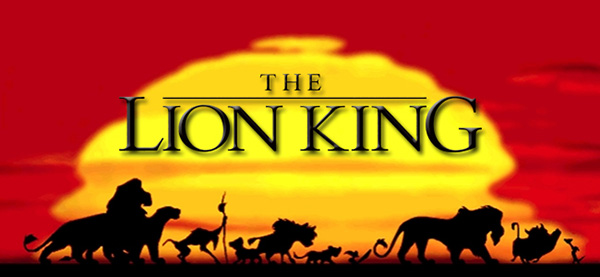
Joseph Campbell, an American mythologist, found a recurring pattern in the mythologies of the world. He compiled all of his studies in his 1949 book: The Hero with a Thousand Faces . Campbell found that all the mythologies with a single, well-defined protagonist (or the ‘hero’) had the same skeleton i.e. the structure of all these narratives had a single recurring pattern if studied from the point of view of the protagonist. He divided the now very popular ‘The Hero’s Journey’ into twelve stages which follows the protagonist from beginning to end in the story’s time frame. These twelve stages first influenced the auteurs Stanley Kubrick and George Lucas in their projects 2001: A Space Odyssey (1968) and Star Wars (1977) respectively. If this template is matched with the story structures of modern single protagonist stories (e.g. movies from the Marvel Cinematic Universe, the Bahubali movies), we would come to a conclusion that writers still use this template, consciously or unconsciously, in order to structure their narratives. And this is what makes it an important study.
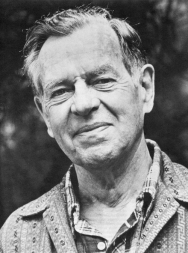
But then, why only The Lion King (1994) ? One could’ve picked any modern story, Black Panther (2018) for example, to explain this template. The reason for this is the careful or rather a very conscious application of this template to Simba’s journey. The writers of this film have acknowledged Shakespeare’s Hamlet (1609) and the Biblical stories of Joseph and Moses as being the inspiration for the film’s story. All of these stories, if not strongly, adhere to Campbell’s template. So, let us look at how Simba’s journey to the throne is guided by Campbell’s twelve stages. The Lion King (1994), screenplay by Irene Mecchi, Jonathan Roberts & Linda Woolverton, directed by Roger Allers & Rob Minkoff.
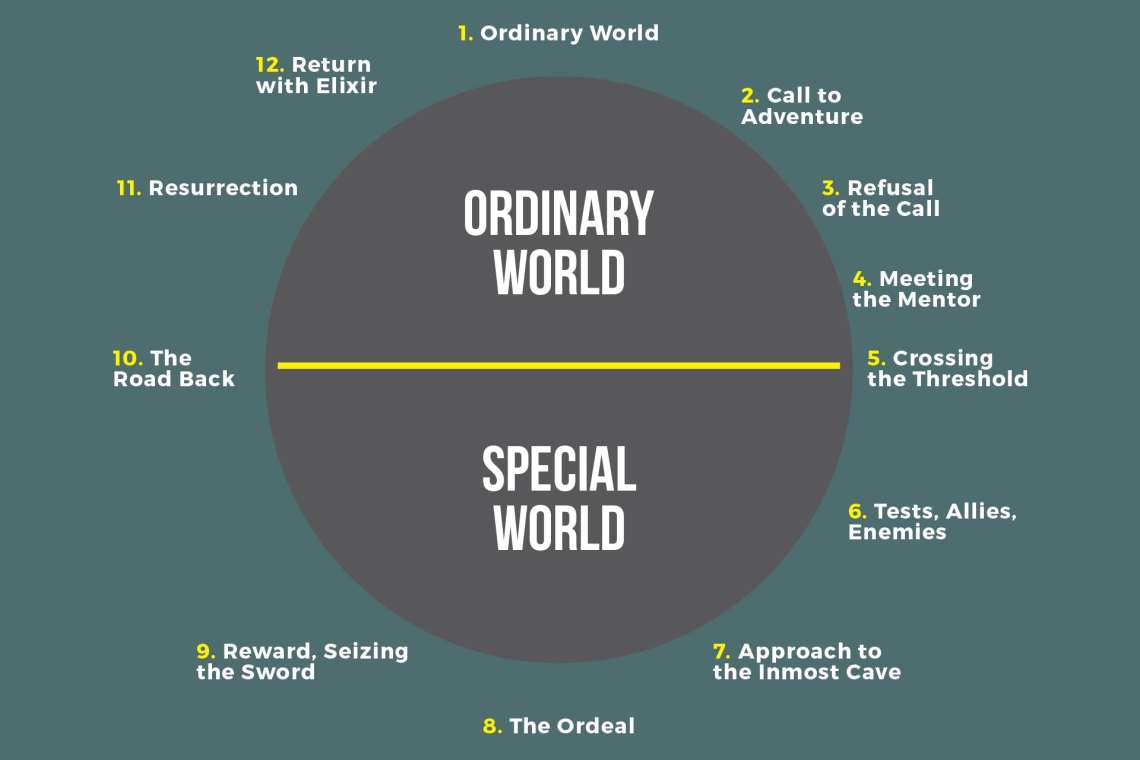
1. The Ordinary World
In myth: The hero is oblivious to the adventures to come. It’s the safe place, the everyday life where we learn crucial details about our hero.
In The Lion King: Simba is born in the Pride Lands, which is a comfortable atmosphere for him to get nurtured. We come to know of his character traits and ‘life need’ which is to become as brave as his father Mufasa so that one day he could succeed him as the king.
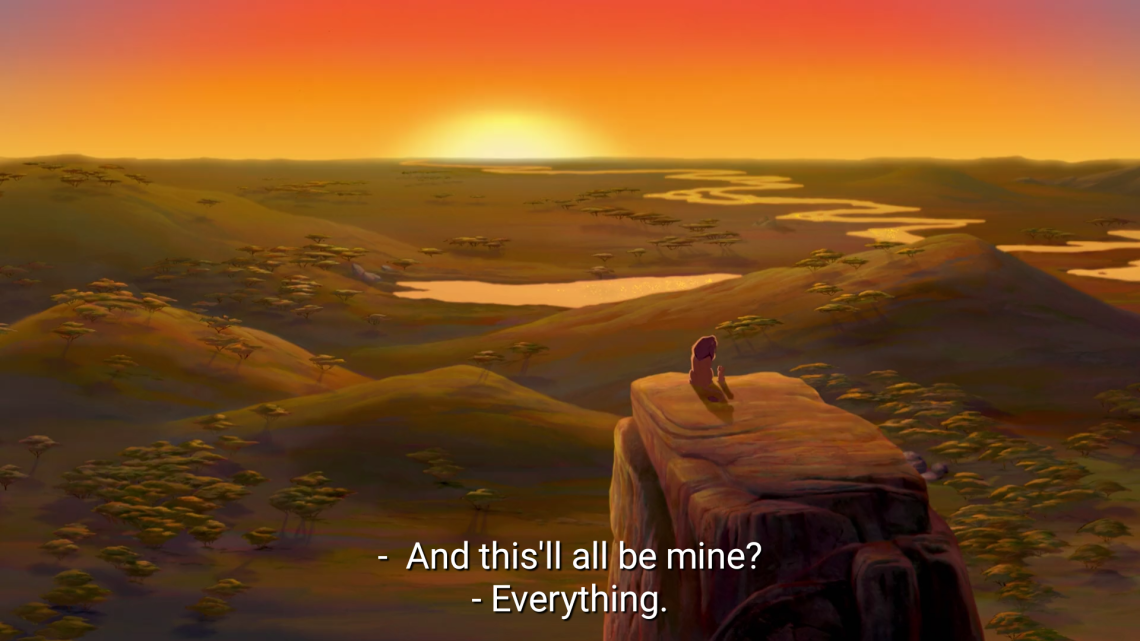
2. Call To Adventure
In myth: The hero’s adventure begins when they receive a call to action. It may not be very dramatic but arrives when they least expect it. Whatever the call is, it ultimately disrupts the comfort of the hero’s ordinary world.
In The Lion King: The film’s clear antagonist, Scar, pokes our protagonist Simba’s self beliefs of bravery. He tricks him to go on an adventure, to a forbidden elephant’s graveyard, where he is attacked by a trio of hyenas to be ultimately saved by Mufasa. It is important to note that, this moment in the story is a portrayal of Simba’s first loss, because he is not supposed to be ‘ready’ yet! The ‘call’ is actually a call of ‘ portrayal of bravery’ which brings the first hard strike to our hero’s beliefs about himself.
3. Refusal of the Call
In myth: Although the hero may be eager to accept the quest, at this stage they will have fears that need to be overcome.
In The Lion King: Simba realizes his mistake and apologizes before Mufasa. This apology is a sub-textual indication of refusal to the call of ‘portrayal of bravery’ .
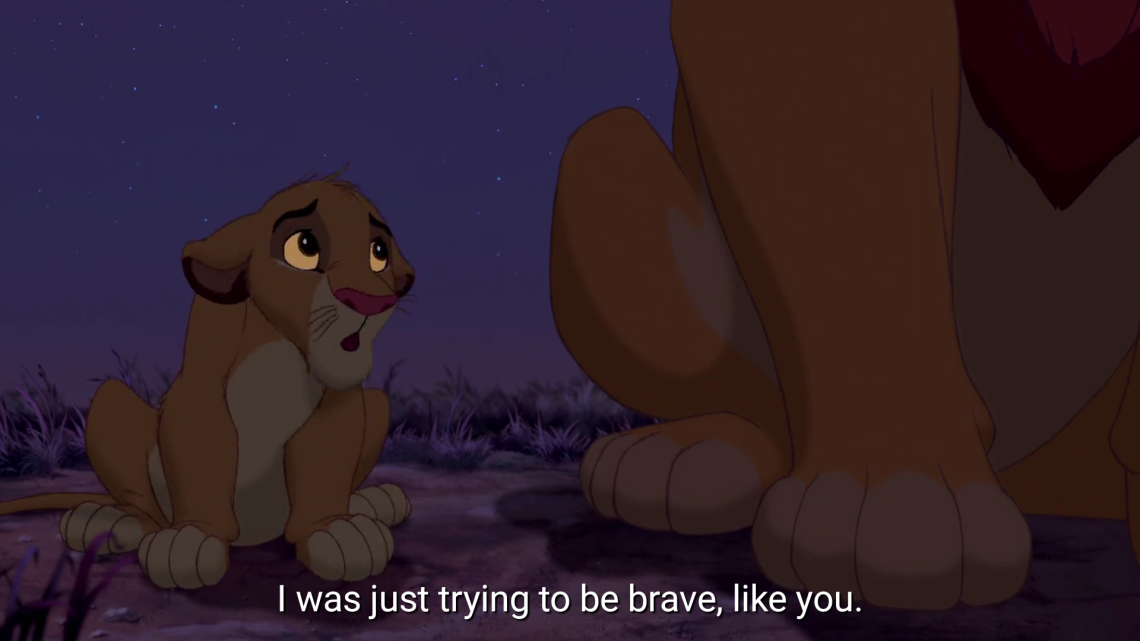
4. Meeting the Mentor
In myth: At this crucial turning point where the hero desperately needs guidance, they meet a mentor figure who gives them something they need. It could be wise advice, practical training, or even self-confidence. The mentor’s offering helps dispel their doubts and fears, giving them the strength and courage to begin their quest.
In The Lion King: Mufasa is clearly Simba’s mentor. He educates him about the true meaning of bravery. This valuable piece of advice adds to Simba’s brain which will later help him in his quest.
5. Crossing the Threshold
In myth: The hero is now ready to act upon the call to adventure and truly begin their quest, whether it be physical, spiritual, or emotional. This action signifies the hero’s commitment to their journey and whatever it may have in store.
In The Lion King: After Scar kills Mufasa(a very emotional plot point in the story), Simba is forced to leave his ‘ordinary world’ and begin a journey of self-discovery. The journey although physical, is sub-textually emotional.
6. Tests, Allies, Enemies
In myth: Now finally out of their comfort zone, the hero is confronted with an ever more difficult series of challenges that test them in a variety of ways. The hero needs to find out who can be trusted and who cannot. They may earn allies and meet enemies who will, each in their own ways, help prepare them for the greater ordeals yet to come.
In The Lion King: Simba meets Timon and Pumbaa, who are fellow outcasts, and adopts their motto of ‘Hakuna Matata’ i.e. living their life without any worries and leaving their past behind them. Although, this goes against Simba’s kingly teachings, he still adopts it. Perhaps because it provides him much needed comfort after the bad times he has been through. Although Timon and Pumbaa might seem allies as of now, they will turn into enemies(don’t approach the word very strongly) as the story progresses, simply because their care-free philosophy is very poisonous to Simba’s ‘life need’.
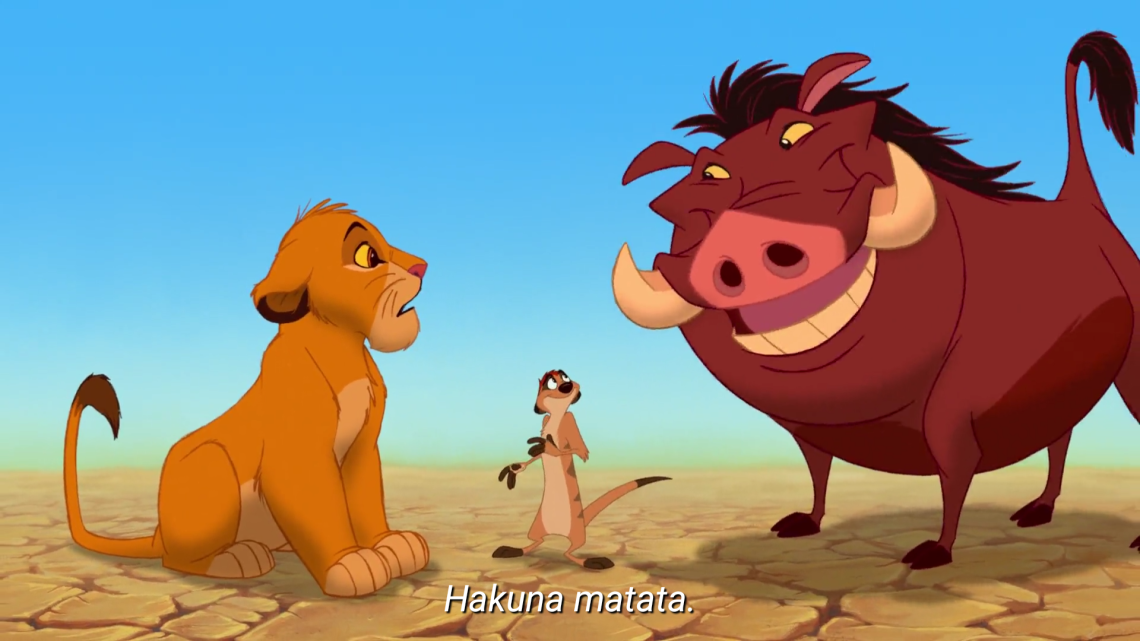
7. Approach to the Inmost Cave
In myth: At the threshold to the inmost cave, the hero may once again face some of the doubts and fears that first surfaced upon their call to adventure. They may need some time to reflect upon their journey and the road ahead in order to find the courage to continue.
In The Lion King: After Nala(hero’s love interest) unceremoniously discovers a grown-up Simba, she pushes him to think about his past and his original goals, which he seems to have forgotten. Simba repels all the thoughts at first but he must and does enter his inmost cave where he must confront his fears so that he could come out to a bright morning on the other side.
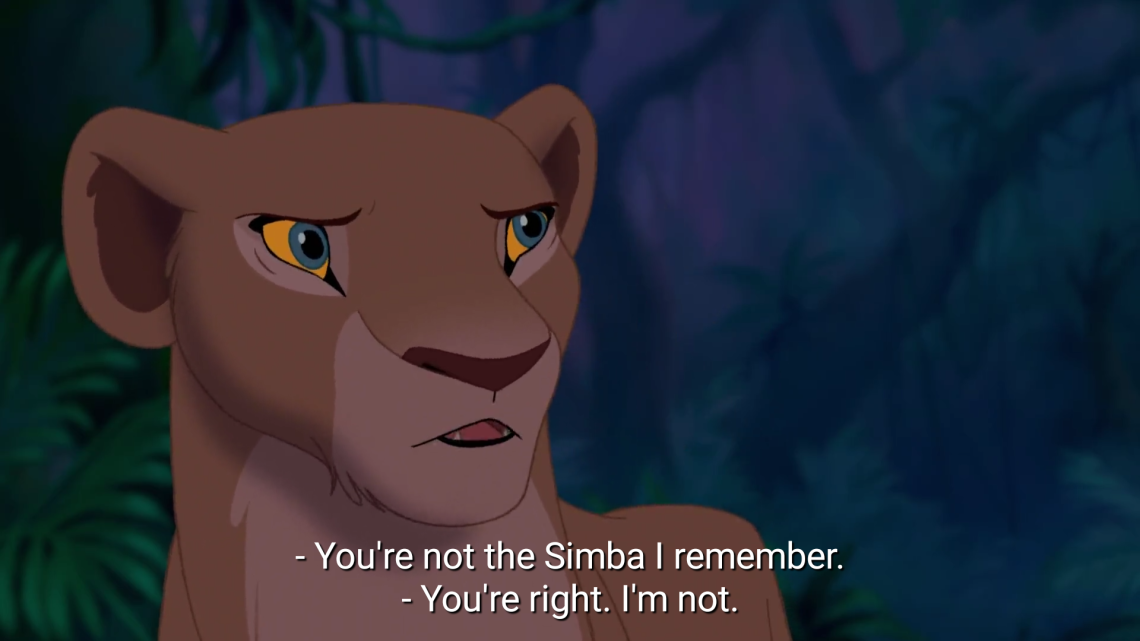
8. The Ordeal
In myth: The hero must draw upon all of their skills and experiences gathered upon the path to the inmost cave in order to overcome their most difficult challenge. Only through some form of “death” can the hero be reborn, experiencing a metaphorical resurrection that somehow grants them greater power or insight necessary in order to fulfill a destiny.
In The Lion King: In a marvelous cinematic moment, Simba sees his father in the skies, who makes him remember the purpose of his life. Because of this emotionally challenging moment, Simba, who allowed himself to drown in his new beliefs, resurfaces to face the reality!
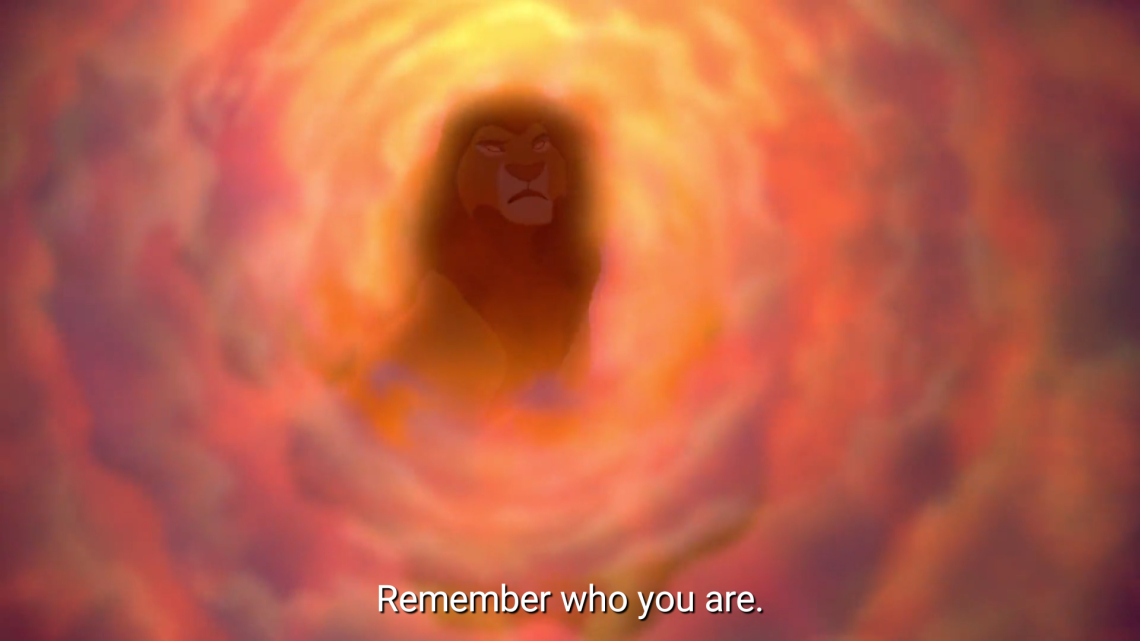
9. The Reward
In myth: After defeating the enemy, surviving death, and finally overcoming their greatest personal challenge, the hero is ultimately transformed into a new state, emerging from battle as a stronger person and often with a prize.
In The Lion King: After his encounter with Mufasa, Simba now strongly believes that he is as brave as his father. And this is his reward after the resolution of his personal conflicts. The enemy which established itself as self doubt, loses the battle, because our hero proves himself to be stronger than it.
10. The Road Back
In myth: Now they must return home with their reward but, this time, the anticipation of danger is replaced with that of acclaim and perhaps vindication, absolution, or even exoneration. However, the hero’s journey is not yet over and they may still need one last push back into the Ordinary World.
In The Lion King: Simba begins his journey back home. But he can’t really go back, because he still has to defeat Scar, the main antagonist of the story.
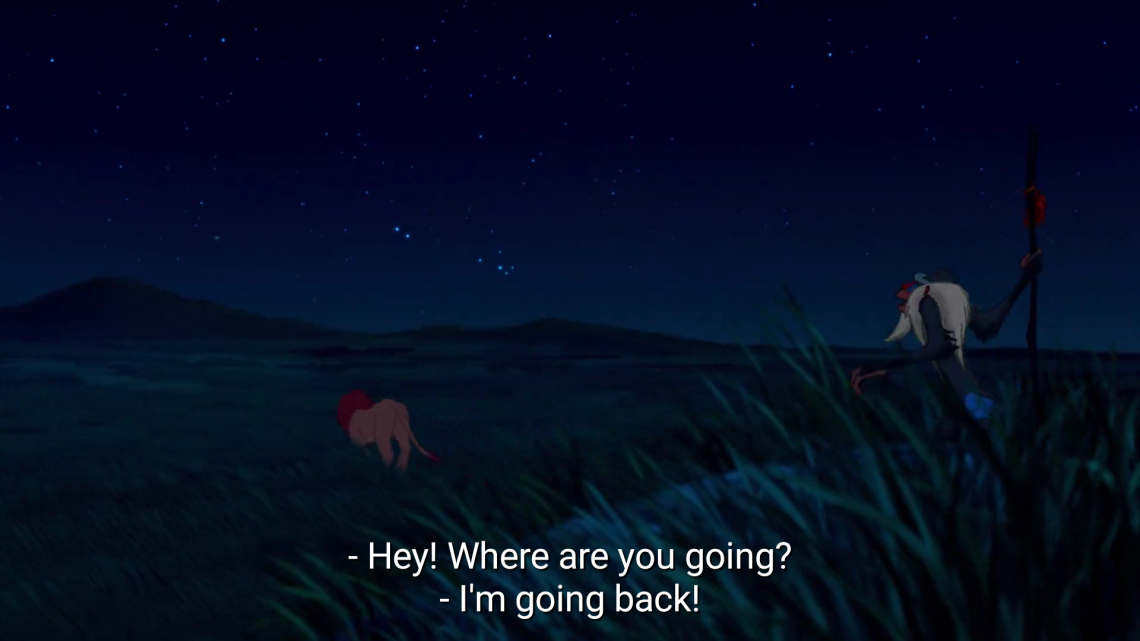
11. Resurrection
In myth: This is the climax during which the hero must have their final and most dangerous encounter with death. The final battle also represents something far greater than the hero’s own existence, with its outcome having far-reaching consequences for their ordinary world and the lives of those they left behind.
In The Lion King: Simba learns that it was Scar who murdered his father Mufasa. After a duel with Scar, Simba emerges as the winner which proves his worth to be a king of the Pride Lands. This resurrection is established by a dramatic sequence in which Simba roars on the Pride Rock to be joined by the members of his pack.
12. Return with Elixir
In myth: The final reward that the hero obtains may be literal or metaphoric. It could be a cause for celebration, self-realization, or an end to strife, but whatever it is, it represents three things: change, success, and proof of the journey.
In The Lion King: Simba restores the prosperity that his father’s kingdom once had. He wins Nala’s love and the respect of his kingdom. All in all, it is a happy ending to our hero’s journey! 🙂
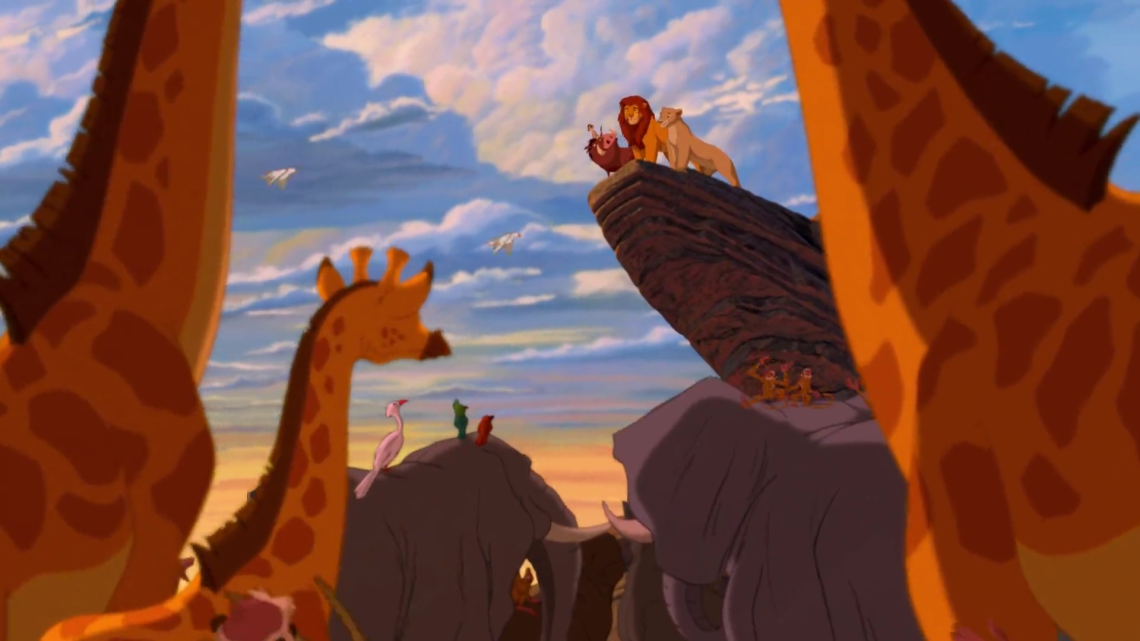
This recurring template of The Hero’s Journey, for me, instills a belief that how life and movies go hand in hand. Even though this film is animated and characters are fictional, the emotional connect of it with the audience is never undermined. The Lion King has some very emotionally striking moments. It also inculcates humour by introducing vividly memorable characters of Timon and Pumbaa in the narrative so that the story remains interesting. The content is suitable for audience members of all ages and varying maturity. Everyone will have something to take back from this movie. I hope you liked this piece on The Lion King, if you haven’t checked out the other posts, I recommend you to! Please subscribe to the blog by scrolling down to the end of page. If you have any suggestions, please don’t forget to comment. See you next time!
The following article was referred to while writing this blog post: https://skift.com/2016/10/28/the-heros-journey-a-human-framework-for-building-modern-travel-brands/
Share this:
Published by Ravish Pathan
Budding engineer, a movie buff and a student of film! View all posts by Ravish Pathan
Leave a comment Cancel reply

- Already have a WordPress.com account? Log in now.
- Subscribe Subscribed
- Copy shortlink
- Report this content
- View post in Reader
- Manage subscriptions
- Collapse this bar
How to Teach the Hero’s Journey: Engaging Students with the Monomyth Story Structure
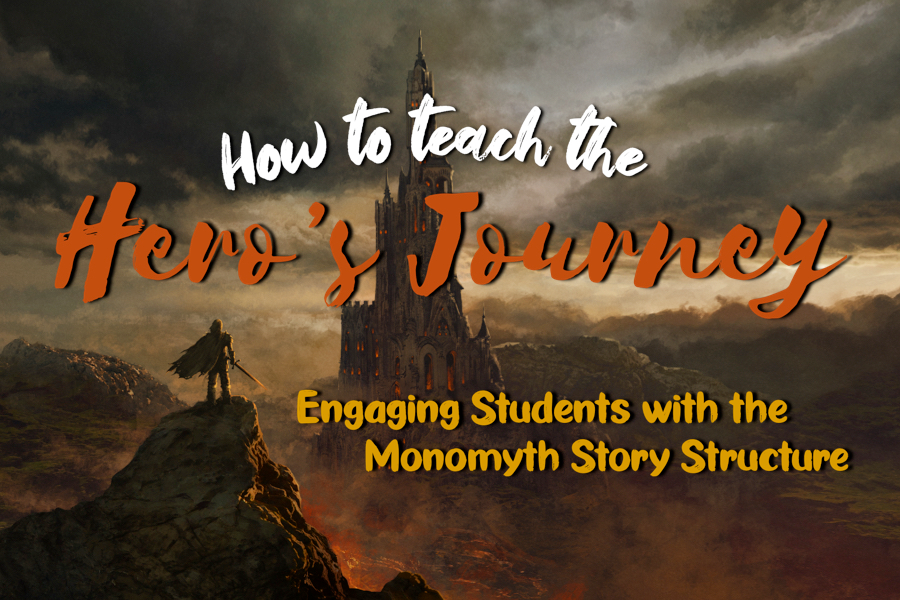
Looking for advice on how to teach the Hero’s Journey in your secondary ELA class? Between a unit outline, a list of teachable titles, and engaging activities, this post is just what you need to get started.
What defines a hero?
That’s the simple question I love to open with when teaching the Hero’s Journey in secondary ELA. The best part? As students partake in an engaging discussion about their favorite heroes and the qualities that make them so great, they are unknowingly laying the foundation for your lesson. Because what your students might not realize is that all heroes, no matter who they are, where they come from, or what heroic quest they complete, all have something in common.
And that, my teacher friend, is the essence of the Hero’s Journey.
Keep reading to learn more about teaching the Hero’s Journey and my best tips for making it an engaging voyage for your students.
What Is the Hero’s Journey and Why Is It Important?
The Hero’s Journey is a classic narrative pattern that traces the transformative trek of a protagonist from their ordinary world into the unknown. During this journey, the character sets out on some form of adventure, meets mentors along the way, faces various obstacles, and overcomes challenges. In the end, they return home a hero equipped with newfound knowledge, perspective, or a physical object for the greater good.
This archetypal structure is as old as time and can be found in myths, legends, and stories throughout history. However, it’s widely used in modern literature and cinema as well. Luke Skywalker? Hero. Katniss Everdeen? Hero. The same can be said for characters ranging from Harry Potter to Spiderman. The Hero’s Journey can be traced throughout movies like Finding Nemo , The Lion King , The Wizard of Oz , Moana , Frozen , and even Shrek . I mean the list goes on and on.
Why Teach the Hero’s Journey?
By exploring this archetypal pattern, students can recognize and analyze the deeper meaning behind a wide variety of narratives, fostering critical thinking, empathy, and a deeper appreciation for storytelling. However, the importance of The Hero’s Journey extends beyond literature—and that’s really why it’s important.
The Hero’s Journey is a reflection of a universal human experience of growth and self-discovery. (What teenager can’t relate to that?) Therefore, students can apply the monomyth to their own lives. They can take what they learned and use it to see their inner hero as they answer their own calls to adventures, face challenges, conquer their fears, and come out on the other side with newfound insights and knowledge.
It’s this real-life connection that gives the Hero’s Journey its true power and explains why the literary framework has stood the test of time.
What Are the 12 Stages of the Hero’s Journey?
The Hero’s Journey can be broken down into 12 main phases. While not all heroes experience every stage in the same way, it goes a little something like this:
- The Ordinary World: An introduction to the protagonist’s everyday life, relationships, and any challenges or limitations they face are first introduced.
- The Call to Adventure: The protagonist receives a compelling invitation or challenge that initiates the on the heroic journey.
- Refusal of the Call: The protagonist resists the call to adventure due to fear, doubt, or a sense of inadequacy.
- Meeting the Mentor: The protagonist encounters a mentor figure who provides guidance, advice, and assistance needed for the journey.
- Crossing the Threshold: The protagonist leaves the familiar and ordinary world behind and enters the unknown.
- Tests, Allies, and Enemies: The protagonist encounters various obstacles,enemies, and allies that test their will, determination and character.
- Approach to the Inmost Cave: The protagonist prepares for a significant challenge or confrontation, symbolizing their innermost fears, doubts, or weaknesses.
- Ordeal: The protagonist is pushed to their limits when faced with their greatest challenge, undergoing a transformative experience.
- Reward: After overcoming the ordeal, the protagonist is rewarded with something, often knowledge, that empowers them to continue their journey.
- The Road Back: The protagonist begins a journey back to the ordinary world.
- Resurrection: They face a final challenge, where they must apply everything they have learned and experienced.
- Return with the Elixir: The protagonist returns and is reunited with the ordinary world, having been transformed by “the elixir”—an object, knowledge, or insight—for the greater good.
How to Teach the Hero’s Journey
Want to maintain student engagement throughout the trek of teaching the Hero’s Journey? Read through the steps below for an easy-to-follow outline to bring the narrative pattern to life in your classroom.
Step 1: Begin with a Conversation
Before formally introducing the concept, get students thinking (and engaged) with a simple conversation. Consider your essential questions for the unit and let them guide your initial discussion. Have students reflect on the heroes in their lives, asking them to work together to define what makes a hero in the first place. Here are a few questions you can use to get started:
- What does it mean to be a hero?
- Who do you consider as heroes in your life?
- Do all heroes share certain traits?
- Are heroes born or made?
- How can an individual change by taking heroic action?
- Do heroes have responsibilities to themselves? To others? To Society?
- What draws us to stories about heroes, real or fiction?
Step 2: Introduce the Concept
Next, provide students with a clear definition of the Hero’s Journey and explain its 12 stages. It’s helpful to use visual aids such as diagrams or infographics to help students visualize the structure as a full circle and transformative journey. Additionally, you can incorporate brief videos, like this TED-Ed , to provide an overview of the journey, too.
Step 3: Start with Low-Stakes Application
Once students understand what the Hero’s Journey is, have them work together to think of relevant examples of characters or plotlines that follow the pattern. As a class, create a list of familiar characters in popular movies and books that they believe represent the Hero’s Journey. This is a low-stakes way to get them to start applying the concept. Note: You do not need to dive into deep analysis here. Don’t worry, that comes next.
Step 3: Analyze Examples
Before diving into a more complex text, check for understanding using examples from well-known stories or films. Analyze a popular movie plot, working as a class to identify each stage of the Hero’s Journey. Pause to discuss the significance of key moments and check for comprehension. Encourage students to share their observations and interpretations of the Hero’s Journey along the way.
Strive to incorporate modern examples of the Hero’s Journey that resonate with your students’ interests and experiences. This will heighten student engagement and help them see the relevance of the Hero’s Journey in their own lives.
Step 4: Bring in the Literature
Whether you decide to teach the Hero’s Journey using short stories or a novel, select texts that provide clear examples of the narrative pattern. If this is the first time your students are working with the Hero’s Journey, analyze the selected literature together to ensure understanding along the way. Scaffold the analysis by using a mix of read-alouds, turn and talks, group work, class discussions, comprehension questions, and quick writes. Additionally, have students track the progress of the Hero’s journey in their notes or using a graphic organizer.
Step 5: Apply Student Knowledge
Provide students with various opportunities to apply their knowledge of the Hero’s Journey through writing assignments, creative projects , or group presentations. Start with simple tasks, such as identifying the stages in a short story, and gradually move towards more complex projects, like crafting their own Hero’s Journey narratives or writing a literary analysis essay .
What to Read When Teaching the Hero’s Journey?
Whether you’re looking to pull excerpts or to dive into full-length texts, here are some engaging titles you can use in your secondary classroom when teaching the Hero’s Journey:
● The Hobbit by J.R.R. Tolkien ● Life of Pi by Yann Martel ● To Kill a Mockingbird by Harper Lee ● The Adventures of Huckleberry Finn by Mark Twain ● Lord of the Flies by William Golding ● The Odyssey by Homer ● The Alchemist by Paulo Coelho ● The Wizard of Oz by L Frank Baum ● The Hunger Games by Suzanne Collins ● The Lightning Thief by Rick Riordan ● Holes by Louis Sachar ● Divergent by Veronica Roth ● Harry Potter and the Sorcerer’s Stone by JK Rowling
On the other hand, if you’re looking for short stories for teaching the Hero’s Journey, read this post here.
Exciting Activities to Engage Students with the Hero’s Journey
Whether you’re looking for formative check-ins or summative assessments, here are some engaging activities that give your students an opportunity to shine as the Hero in their learning journey:
- Hero’s Journey Roadmap: Play up the “adventure” element by encouraging students to design a creative roadmap to express the various stages of the Hero’s Journey. Adapt this activity to reflect the 12 stages or the narrative structure in general or map out a specific character’s experience. Either way, encourage students to use images, quotes, and symbols to enhance this visual representation.
- Everyday Heroes: While we associate the term “hero” with characters from comic books and movies, there are plenty of heroes among us. Therefore, this activity encourages students to take a closer look at the essential question, “What makes a hero?” Have students identify real-life heroes and present what their real-life version of this journey looks like. These figures can include historical figures, athletes, changemakers, activists, or even everyday people in their own community.
- Hero’s Journey Comparative Analysis: Assign students two texts, characters, or films that follow the Hero’s Journey. The twist? The plotlines should differ in genre, time period, or cultural context. Ask students to write a comparative analysis essay, exploring how the stages are portrayed in each text while highlighting that heroes come in all different shapes and sizes. To set students up for success, encourage them to start with a simple Venn diagram before translating the information into more thorough writing.
- Hero’s Journey in the Twitterverse : Students these days document everything on social media. So, why not document their learning? After reading a text, have students represent the character’s Hero’s Journey through a series of Tweets (or Instagram posts). Each post should highlight a specific stage in the journey. By the end, students should present 12 posts that showcase the character’s heroic transformation from start to finish. You can have students create dummy accounts or complete the activity using social media post templates.
- A Multigenre Monomyth: Rather than completing a classic character analysis, challenge students to create a multi-genre representation of a character’s Hero’s Journey. Whether students analyze a hero from a classroom text or from pop culture, have them explore said character’s journey through various genres. Each stage of the Hero’s Journey should be represented and analyzed through a different genre. In the end, they’ll have a multigenre representation of how the character undergoes transformation and overcomes challenges throughout the story.
Examples of genres include poetry, journal entries, abstract recipes, formal analysis, song lyrics, artwork, comic strips, maps, news articles, and more.
- Create Your Own Hero’s Journey: Encourage students to write their own Hero’s Journey stories. They can create original characters, outline the stages, and craft a compelling narrative that follows the pattern. Students can share their stories with the class or in small groups. As an alternative, have your students create the outline or story map for a short story that would follow the hero’s journey.
The activities above provide diverse ways for students to showcase their understanding of this narrative structure. Whichever activities you choose, your students are sure to showcase creativity, critical thinking, and engagement.
Final Thoughts on Teaching the Hero’s Journey
Before you begin your own heroic journey of teaching this beloved narrative pattern, remember that the Hero’s Journey is about much more than literature itself. Use the Hero’s Journey to engage students in the power of storytelling and self-discovery. Talk about real-world application!
Leave a Reply Cancel reply
Your email address will not be published. Required fields are marked *
Save my name, email, and website in this browser for the next time I comment.
The Hero’s Journey: 12 Steps That Make Up the Universal Structure of Great Stories
by David Safford | 0 comments
Want to Become a Published Author? In 100 Day Book, you’ll finish your book guaranteed. Learn more and sign up here.
At some in your writer's life, you've probably come across the term Hero's Journey. Maybe you've even studied this guide for storytelling and applied it to your own books—and yet, something about your own application felt off. You wanted to learn more, but didn't know where to start.
Maybe you needed a resource that would simplify the hero's journey steps and all the other major details instead of complicate them.
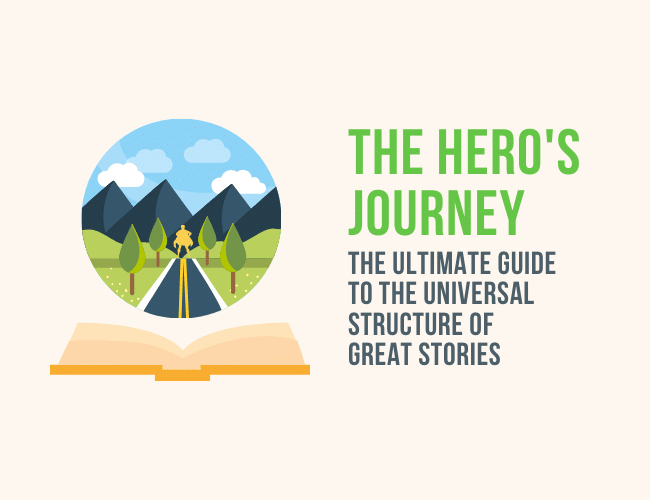
The Hero's Journey is as old as humanity itself. And through history, this single story form has emerged over and over again. People from all cultures have seemed to favor its structure, and its familiar types of characters (archetypal hero, anyone?), symbols, relationships, and steps.
If you want to build or strengthen your writing career and win a following of many happy readers, you want this particular tool in your writer's toolbox.
Let's dive in.
Need help applying The Hero's Journey to your story outline and manuscript? Download this free Hero's Journey worksheet now!
Why I Love the Hero's Journey (And You Will, Too)
Like many, I grew up loving Star Wars. I especially loved the music and bought the soundtracks at some point in middle school. When my parents weren't home and I had the house all to myself, I'd slip one of the CDs into my stereo, crank the volume up, and blast the London Symphony Orchestra. I even pretended I was conducting the violins and timpani myself.
I know it's nerdy to admit. But we love what we love, and I love the music of great movies.
In a way, the Hero's Journey is like a soundtrack. It follows familiar beats and obeys age-old principles of human emotion. We can't necessarily explain why a piece of music is so beautiful, but we can explain what it does and simply acknowledge that most people like it.
As I've come to understand Joseph Campbell's groundbreaking monomyth theory, commonly known as the Hero's Journey, I've fallen deeper and deeper in love with it.
But it's important to make sure you know what it is, and what it isn't.
The Hero's Journey isn't a formula to simply follow, plugging in hackneyed characters into cliched situations.
It's not “selling out” and giving up your artistic integrity
The Hero's Journey is a set of steps, scenes, character types, symbols, and themes that tend to recur in stories regardless of culture or time period. Within these archetypes are nearly infinite variations and unique perspectives that are impacted by culture and period, reflecting wonderful traits of the authors and audiences.
Also, the Hero's Journey is a process that your reader expects your story to follow, whether they know it or not. This archetype is hard-wired into our D.N.A. Let's look at how to use it to make your own stories stronger.
How to Use This Hero's Journey Post
In the beginning, there were stories. These stories were told by mothers, soldiers, and performers. They were inscribed on the walls of caves, into tablets of stone, and on the first sheets of papyrus.
This is how the Hero's Journey was born.
In this post, I'll walk you through the Hero's Journey twelve steps, and teach you how to apply them into your story. I'll also share additional resources to teach you some other Hero's Journey essentials, like character archetypes, symbols, and themes. By the end of this post, you'll be able to easily apply the Hero's Journey to your story with confidence.
And don't skip out on the practice exercise at the end of the post! This will help you start to carve out the Hero's Journey for your story with a practical fifteen minute exercise—the best way to really retain how the Hero's Journey works is to apply it.
Table of Contents: The Hero's Journey Guide
What is the Hero's Journey?
Why the Hero's Journey will make you a better writer
The Twelve-Step Hero's Journey Structure
- The Ordinary World
- The Call to Adventure
- The Refusal of the Call
- Meeting the Mentor
- Crossing the Threshold
- Trials, Allies, and Enemies
- The Approach
- The Road Back
- The Resurrection
- Return With the Elixir
5 Essential Hero's Journey Scenes
A Guide to Structuring Your Hero's Journey
Bonus! Additional Hero's Journey Resources
- 5 Character Archetypes
- 5 Hero's Journey Symbols
- 5 Hero's Journey Themes
What Is the Hero's Journey?
The Hero's Journey is the timeless combination of characters, events, symbols, and relationships frequently structured as a sequence of twelve steps. It is a storytelling structure that anyone can study and utilize to tell a story that readers will love.
First identified and defined by Joseph Campbell, the Hero's Journey was theorizied in The Hero With a Thousand Faces . Today, it has been researched and taught by great minds, some including Carl Jung and Christopher Vogler (author of The Writer's Journey: Mythic Structure for Writers ).
This research has given us lengthy and helpful lists of archetypes , or story elements that tend to recur in stories from any culture at any time.
And while some archetypes are unique to a genre, they are still consistent within those genres. For example, a horror story from Japan will still contain many of the same archetypes as a horror story from Ireland. There will certainly be notable differences in how these archetypes are depicted, but the tropes will still appear.
That's the power of the Hero's Journey. It is the skeleton key of storytelling that you can use to unlock the solution to almost any writing problem you are confronted with.
Why the Monomyth Will Make You a Better Writer
The Hero's Journey is the single most powerful tool at your disposal as a writer.
But it isn't a “rule,” so to speak. It's also not a to-do list.
If anything, the Hero's Journey is diagnostic, not prescriptive. In other words, it describes a story that works, but doesn't necessarily tell you what to do.
But the reason you should use the Hero's Journey isn't because it's a great trick or tool. You should use the Hero's Journey because it is based on thousands of years of human storytelling.
It provides a way to connect with readers from all different walks of life.
This is why stories about fantastical creatures from imaginary worlds can forge deep emotional connections with audiences. Hollywood knows this, and its best studios take advantage. As an example, The Lord of the Rings, by J. R. R. Tolkien, contains mythical creatures like elves and hobbits. Yet it is Frodo's heroic journey of sacrifice and courage that draws us to him like a magnet.
Learn how to easily apply the Hero's Journey 12 Steps to your books in this post. Tweet this
Join 100 Day Book
Enrollment closes May 14 at midnight!
David Safford
You deserve a great book. That's why David Safford writes adventure stories that you won't be able to put down. Read his latest story at his website. David is a Language Arts teacher, novelist, blogger, hiker, Legend of Zelda fanatic, puzzle-doer, husband, and father of two awesome children.

Submit a Comment Cancel reply
Your email address will not be published. Required fields are marked *
Submit Comment
Join over 450,000 readers who are saying YES to practice. You’ll also get a free copy of our eBook 14 Prompts :
Popular Resources
Book Writing Tips & Guides Creativity & Inspiration Tips Writing Prompts Grammar & Vocab Resources Best Book Writing Software ProWritingAid Review Writing Teacher Resources Publisher Rocket Review Scrivener Review Gifts for Writers
Books By Our Writers

You've got it! Just us where to send your guide.
Enter your email to get our free 10-step guide to becoming a writer.
You've got it! Just us where to send your book.
Enter your first name and email to get our free book, 14 Prompts.
Want to Get Published?
Enter your email to get our free interactive checklist to writing and publishing a book.
- Create account
- About the Authors
- What is a Script-Story?
- Script-Stories: Making Reading an Experience Instead of a Struggle
- How To Use Script-Stories in the Classroom
- Reaching Olympus: How Script-Stories Brought Mythology To Life
- Improving Reading Comprehension with Script-Stories
- Why "Creative Teacher"?
- Teacher Testimonials
- Mythology for Teens vs. Reaching Olympus
- Learning the English Language
- Ancient Civilizations: Mesopotamia and Egypt
- The Bible As Literature
- Ancient Greece: Greek mythology, Oedipus Rex, and Antigone
- Ancient Rome: Roman mythology, Julius Caesar, and Spartacus
- Beowulf, Old English, and Anglo-Saxon Culture
- Knights, Chivalry, King Arthur, and the Knights of the Round Table
- Heaven and Hell: Dante's Inferno, the Medieval Church, and Legends of the Saints
- The Canterbury Tales, Robin Hood, and Everyday Life in the Middle Ages
- Utopia and Dystopia: The Sword in the Stone, Gulliver's Travels, and Robinson Crusoe
- Monsters: Frankenstein, Dracula, Dr. Jekyll, Jack the Ripper, Mr. Hyde
- George Orwell: Animal Farm, 1984, and Planet of the Apes
- Teaching Mythology
- How To Set Up a Mythology Course
- How To Become a Mythology Teacher
- Ancient Mythology: Gilgamesh and Egyptian Mythology
- Greek Mythology: The Gods and Heroes
- Greek Mythology: Gallery of the Gods
- Greek Mythology: The Trojan War, the Iliad, and the Odyssey
- Roman Mythology: The Aeneid and Ovid's Metamorphoses
- World Mythology: Tales from Around the World
- Norse Mythology
- King Arthur and the Knights of the Round Table
- Robin Hood Legends
- The Hero's Journey
- Mythical Creatures from Around the World
- Mythology for Kids
- Greek Mythology for Kids
- Teaching the American Dream
- How To Setup an American Literature Course
- The New World: Natives, Explorers, and Pilgrims
- Puritan Life: The Scarlet Letter, The Crucible, and the Salem Witch Trials
- Forming a Nation: The Last of the Mohicans, Washington Irving, and the Founding Fathers
- The American Imagination: Moby Dick, Edgar Allan Poe, and the Transcendentalists
- Slavery and Freedom: Frederick Douglass, Tom Sawyer, and Huck Finn
- Broken Dreams: The Great Gatsby, Of Mice and Men, and To Kill a Mockingbird
- Gamification Resources
- Science Fiction Short Stories
- Distance Learning Resources
- Presentations
- Teaching Literary Elements
- Writing and Paper Topics
- Scoring Guides and Grading Resources
- Another Great Script-Story Site

Creative English Teacher.com
- Why "Creative Teacher"?
- Heaven and Hell: Dante's Inferno, the Medieval Church, and Legends of the Saints
- Utopia and Dystopia: The Sword in the Stone, Gulliver's Travels, and Robinson Crusoe
- Roman Mythology: The Aeneid and Ovid's Metamorphoses
- The Hero's Journey
Teaching Joseph Campbell's The Hero's Journey

Joseph Campbell, an American mythological researcher, wrote a famous book entitled The Hero with a Thousand Faces . In his lifelong research Campbell discovered many common patterns running through hero myths and stories from around the world. Years of research lead Campbell to discover several basic stages that almost every hero-quest goes through (no matter what culture the myth is a part of). He calls this common structure “the monomyth.” It is commonly referred to as "The Hero's Journey."
George Lucas, the creator of Star Wars , claims that Campbell’s monomyth was the inspiration for his groundbreaking films. Lucas also believes that Star Wars is such a popular saga because it taps into a timeless story-structure which has existed for thousands of years.
The Hero's Journey is a great technique for analyzing all kinds of stories--whether they be myths, legends, films, novels, short stories, plays, or even comic books. Educating students about the Hero's Journey encourages them to think about plot structure, character motivation, and theme. It also leads them to consider what qualities they associate with heroes. Are heroes born or are they made? Are there heroes in real-life or must they be larger-than-life? Who are the heroes in our society. Listed below are some resources that I have found successful in my own classroom for teaching the Hero's Journey:
THE HERO'S JOURNEY (PDF) This worksheet gives an overview of the Hero's Journey, as outlined by Joseph Campbell and others. Each step is listed, along with examples from film and literature.
SAMPLE HERO'S JOURNEY UNIT (PDF) This outline provides a suggested unit using this site's resources.
WHY YOUNG PEOPLE NEED HERO STORIES NOW MORE THAN EVER (ARTICLE) This article explains the numerous real-life applications of the Hero's Journey, a message of hope that young people need to hear!
DETAILED PRESENTATION ON THE STAGES OF THE HERO'S JOURNEY WITH LIFE-APPLICATION (SALE ITEM) This in-depth presentation covers the stages of the Hero's Journey, using visual examples from Star Wars and The Lion King. Each stage also has a "My Journey" section that gives each stage a real-life application. Also comes with a note-taking sheet with student use.
DESIGN-A-QUEST: CREATIVE GRAPHIC ORGANIZERS FOR MAKING YOUR OWN HERO'S JOURNEY (SALE ITEM) Want to give your students some practice writing their own Hero's Journey? This set of graphic organizers is perfect for young writers who want to invent some heroes of their own. Using your choice of written-response only or a creative, comic-book-style combination of artwork and written responses, these graphic organizers allow students to create their own hero story. This item also includes a sample Hero's Journey using Disney's Aladdin as an example.
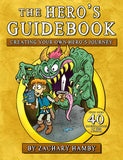

IMAGES
VIDEO
COMMENTS
DESCRIPTION. "The Lion King" tells the story of Simba, his birth, the murder of his father by his Uncle Scar, Simba's exile, and his return. The film is a Disney animation with excellent music. SELECTED AWARDS & CAST. Selected Awards: 1995 Academy Awards: Best Original Score and Best Song. Featured Actors:
A Hero's Journey Directions: For any story, answer the following questions to determine the hero's journey. 1. Ordinary world - What is the hero's world like at the beginning of the story? Hero's Journey 2. Call to adventure - What happens to prompt the hero to take a step into the adventure? 3. Refusal of the call - Does the hero ...
"The Lion King" is an animated musical adventure film released in 1994, produced by Walt Disney Feature Animation and released by Walt Disney Pictures.Directed by Roger Allers and Rob Minkoff, the movie features the journey of Simba, a lion cub destined to succeed his father, Mufasa, as the King of the Pride Lands.
Get a full description of archetypal heroes and journeys in the form of a double-sided handout that can be made into a placemat. Get the steps of the journey, both a shortened, four-level journey and the 12-step, detailed journey.Then, while students view the movie The Lion King, get a storyboard template where students can draw or quote and explain what happens to Simba as he travels through ...
This 37-page presentation uses high-interest images from The Lion King and Star Wars: A New Hope to give detailed accounts of the stages of the Monomyth, Joseph's Campbell's theory of the Hero's Journey. These 12 stages include: The Ordinary World, the Call to Adventure, Meeting with the Mentor, the Supreme Ordeal, etc.
Yeah, scholar Joseph Campbell noticed first—in 1949. He wrote The Hero with a Thousand Faces, in which he outlined the 17 stages of a mythological hero's journey. About half a century later, Christopher Vogler condensed those stages down to 12 in an attempt to show Hollywood how every story ever written should—and, uh, does —follow ...
The Lion King (1994), screenplay by Irene Mecchi, Jonathan Roberts & Linda Woolverton, directed by Roger Allers & Rob Minkoff. Diagrammatic Representation of the twelve stages in 'The Hero's Journey'. 1. The Ordinary World. In myth: The hero is oblivious to the adventures to come.
A graphic organiser based on the Lion King which helps students to understand the narrative structure of the Hero's Journey... Narrative Structure: Hero's Journey - Lion King Worksheet 100 Downloads
Modern hero's journeys (such as the Star Wars saga or The Lion King) were created with an awareness of the pattern and have been criticized for following the pattern too closely. This introduction to the hero's journey is not intended to be a step-by-step process for creating an unoriginal copy of an already existing story. Nor is it detailed ...
Simba decides to go back to Pride Rock to take his throne back, and ready to face his past and the consequences. Hero - Simba. Mentor- Mufasa, Rafiki. Trickster- Timon and Pumba. Shadow - Scar. Shapeshifter - Scar. Herald- Nala. Threshold Guardians- Simba's past and the hyenas.
Hero's Journey - The Lion King by Miguel Martinez on Prezi. Blog. April 18, 2024. Use Prezi Video for Zoom for more engaging meetings. April 16, 2024. Understanding 30-60-90 sales plans and incorporating them into a presentation. April 13, 2024. How to create a great thesis defense presentation: everything you need to know.
The hero faces a final life-and-death ordeal, and amazingly survives. This is often a miraculous escape from death. Once again, the hero demonstrates self-sacrifice for a higher cause, and is rewarded for that courage. 12. Return with Elixir: Having been transformed into someone who is virtuous, courageous, and self-sacrificing, the hero ...
The Hero's Journey can be traced throughout movies like Finding Nemo, The Lion King, The Wizard of Oz, Moana, Frozen, and even Shrek. I mean the list goes on and on. ... Hero's Journey Roadmap: Play up the "adventure" element by encouraging students to design a creative roadmap to express the various stages of the Hero's Journey ...
Frequently the Hero is itching for some kind of adventure or change; this is why they are primed for what is to come. When the danger comes in Step 2, the Hero is ready to take the next step due to their eager, adventurous, or frustrated spirit. Learn more: Hero's Journey Step #1: Ordinary World. Step 2.
Introductory lesson to The Hero's Journey! This PowerPoint introduces the different stages and steps of The Hero's Archetype, as well as includes a graphic organizer for students, and clips from The Lion King for each stage of The Hero's Journey. The videos did not embed, so here are the links to all the videos!
that follows Joseph Campbell's Hero Cycle. Your quest is to follow your hero into the unknown world and identify the Hero's Journey elements that you find. Directions: Step 1: Choose your film Using the list below, select a film. Step 2: Watch As you watch, take notes on the elements you notice that match the hero's journey, including
You may have seen The Lion King at least once but have not noticed the reference to the hero's journey. Slide 4 (Crossing The Threshold) When Simba hears he needs to go back to the Pride Lands he refuses at first, not wanting to leave his beautiful home, but Rafiki shows Simba his father's spirit and gives him words of advice and he decides to ...
"The Hero's Journey" Presentation and Worksheet: Analyze myth, legend, and literature on a whole new level by using the lens of the Hero's Journey. This 37-page presentation uses high-interest images from The Lion King and Star Wars: A New Hope to give detailed accounts of the stages of the Monomyth, Joseph's Campbell's theory of the Hero's ...
Study heroic acts and the stages of Joseph Campbell's Hero 's Journey and analyze how the Hero 's Journey is represented in Marvel's Thor, Langston Hughes' Thank You, M'am, Odyssey, Finding Nemo, Star Wars, The Hobbit, Lord of the Rings, and The Lion King.Part 1 - Frontloading Heroa) Define herob) Define heroic acts - Worksheet: Study examples ...
THE HERO'S GUIDEBOOK (SALE ITEM) Humorously illustrated with over 40 cartoons by the author, this book takes readers through the stages of the Hero's Journey using examples from books, films, and even video games. Important archetypes like the Hero, the Mentor, the Shadow, the Ally, the Trickster, and the Threshold Guardian appear as well. . Each stage of the Hero's Journey also features ...
Modern hero's journeys (such as the Star Wars saga or The Lion King) were created with an awareness of the pattern and have been criticized for following the pattern too closely. This introduction to the hero's journey is not intended to be a step-by- step process for creating an unoriginal copy of an already existing story. Nor is it detailed ...
Welcome to Exploring the 12 Stages of the Hero's Journey, where we explore each of the twelve stages and how your screenplays could benefit from them. We'll trace down the origins of the Hero's Journey, tracing it back to Joseph Campbell's original 17-stage Monomyth that was inspired by his studies on how the journey of the archetypal ...
The Lion King *NEW* Movie Guide | Questions | Worksheet (PG - 2019) takes students on Simba's hero's journey as he deals with shame, lack of confidence, lies and struggles to reach his full potential as King of the Pride Lands. Examine Scar's vocabulary during his song 'Be Prepared' and write a persuasive essay about the effectiveness of the ...